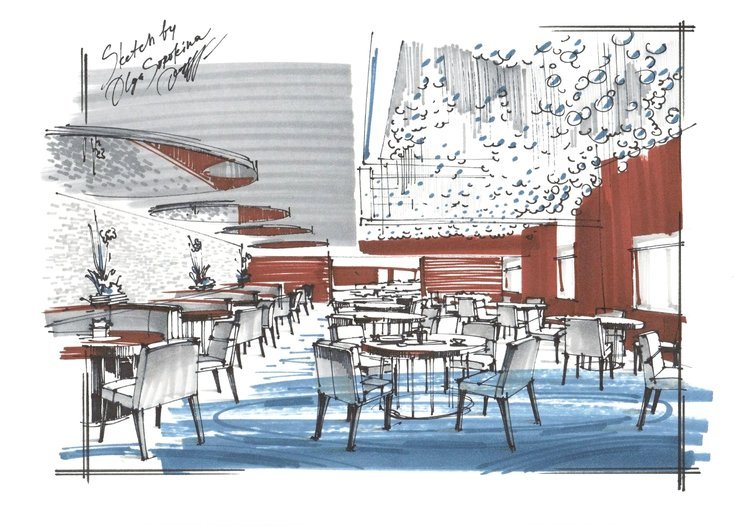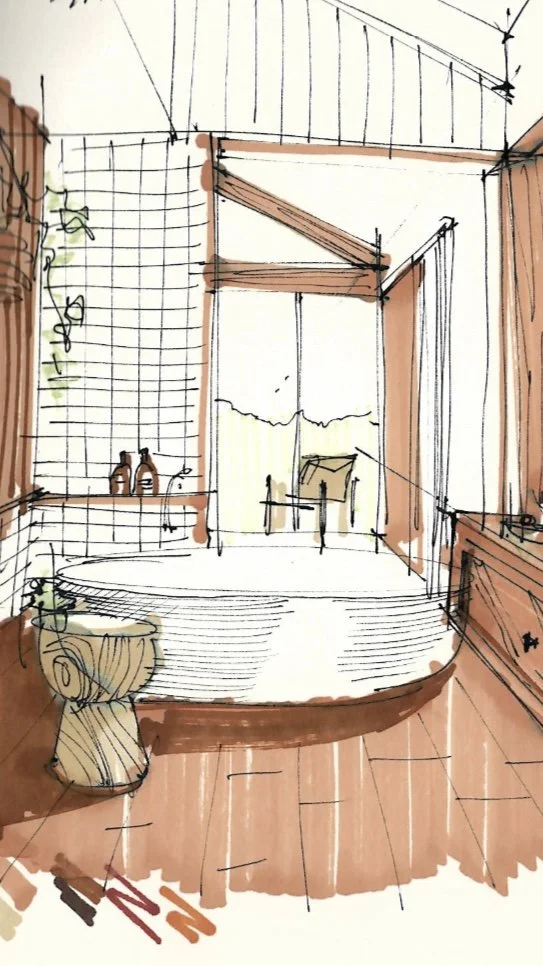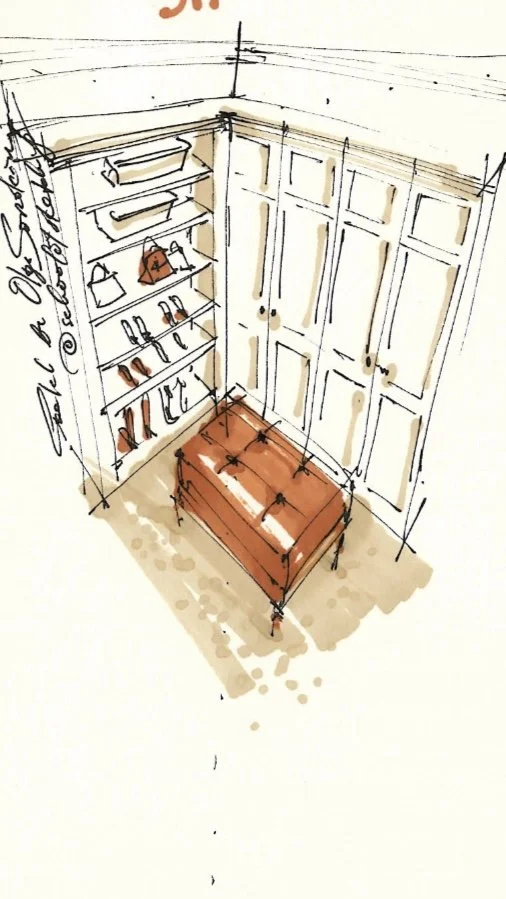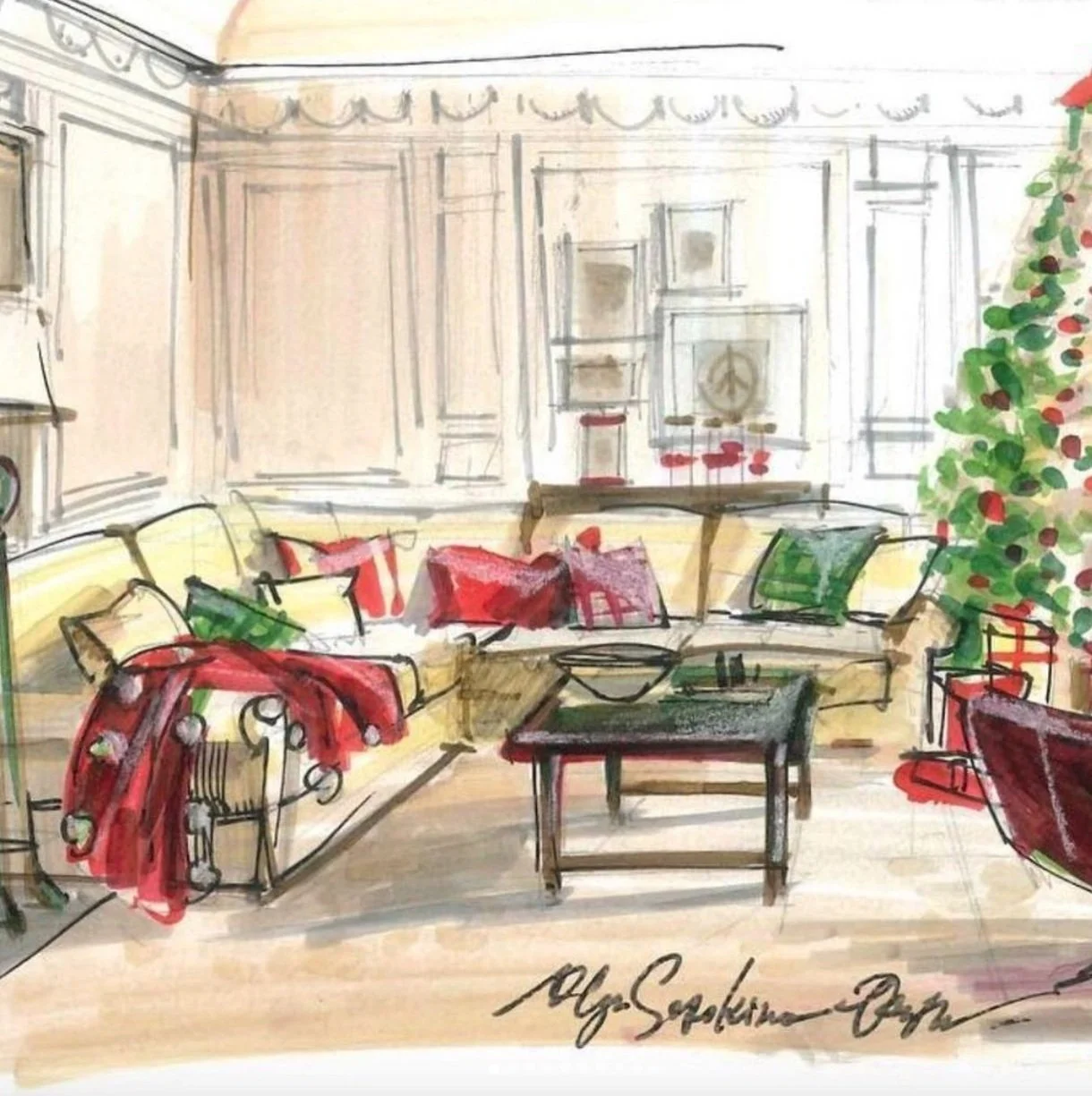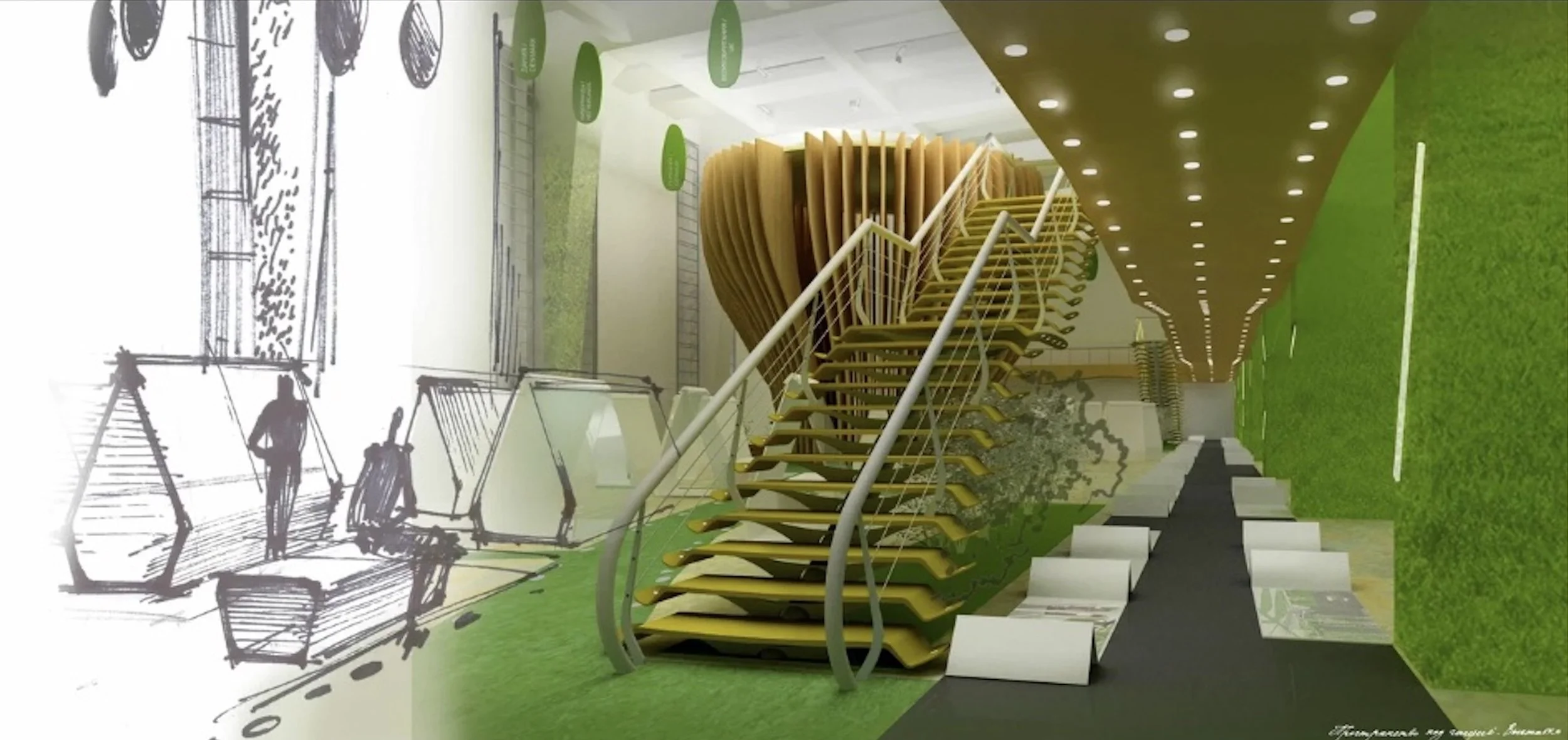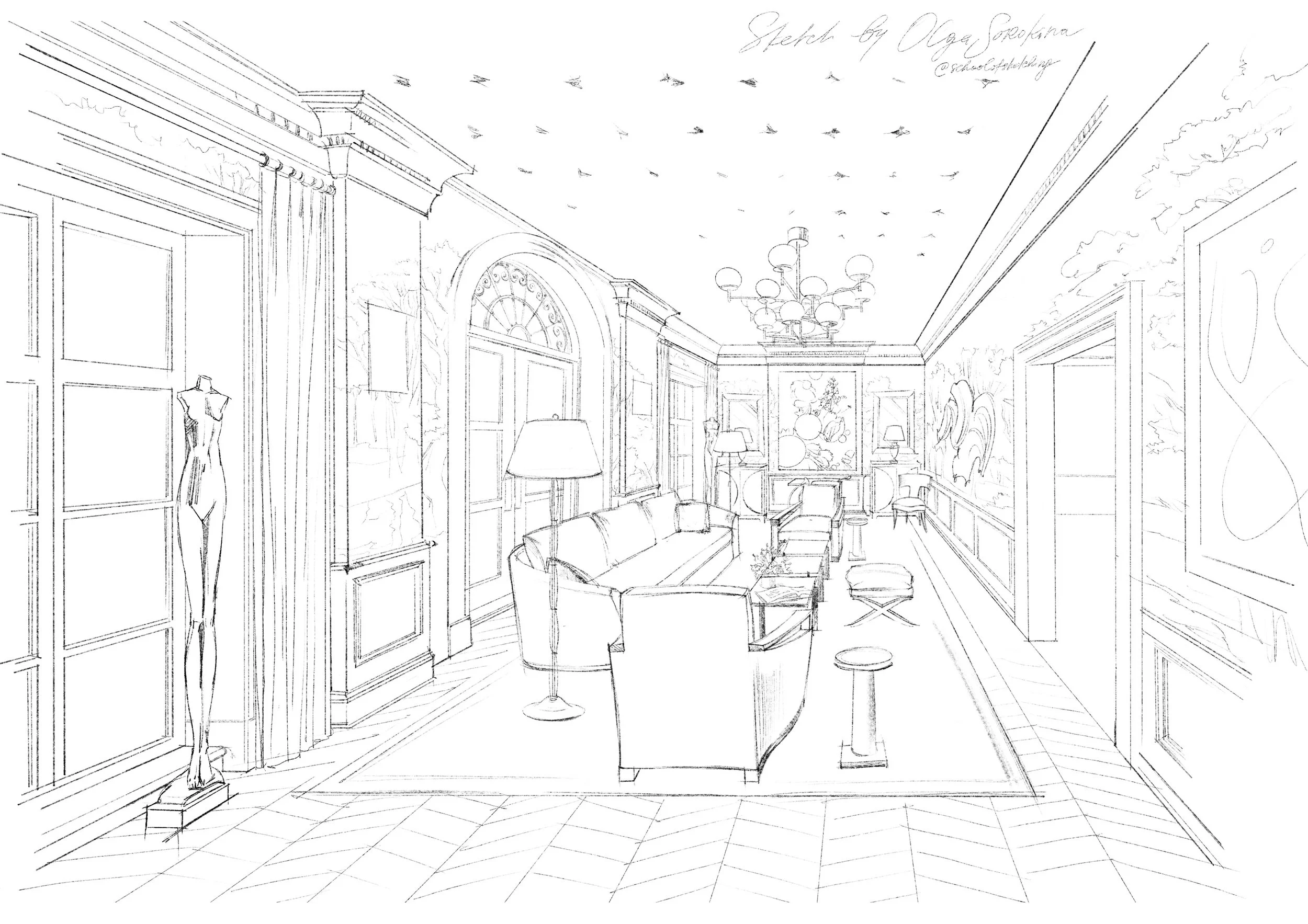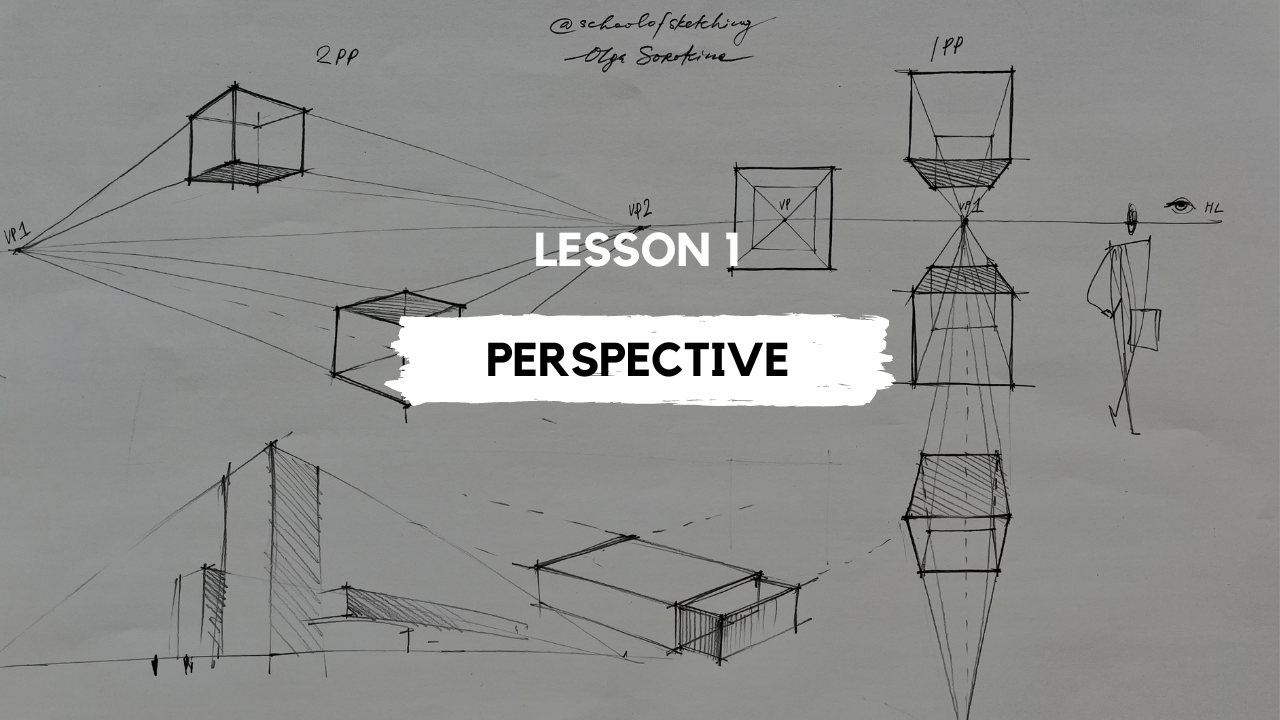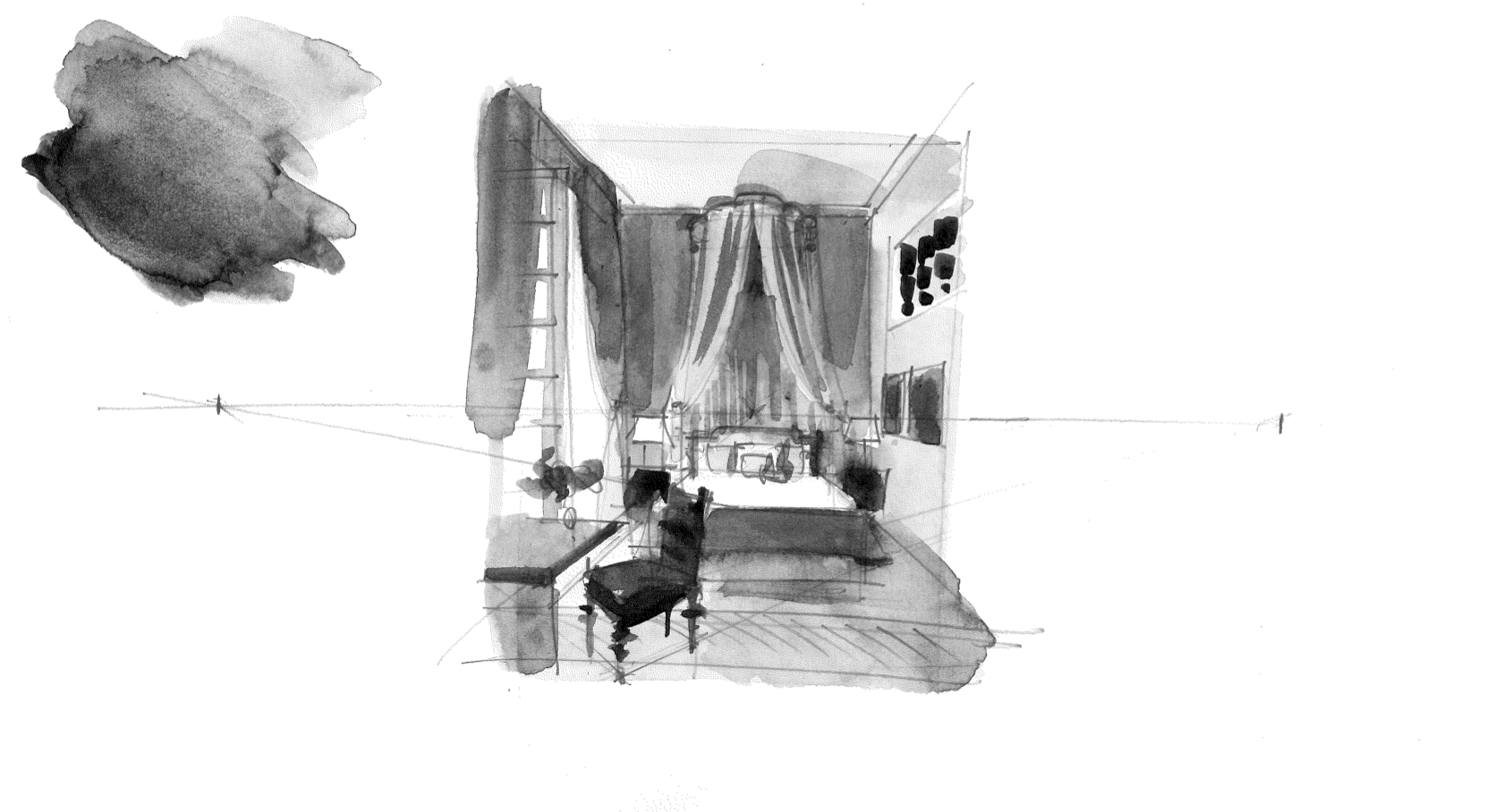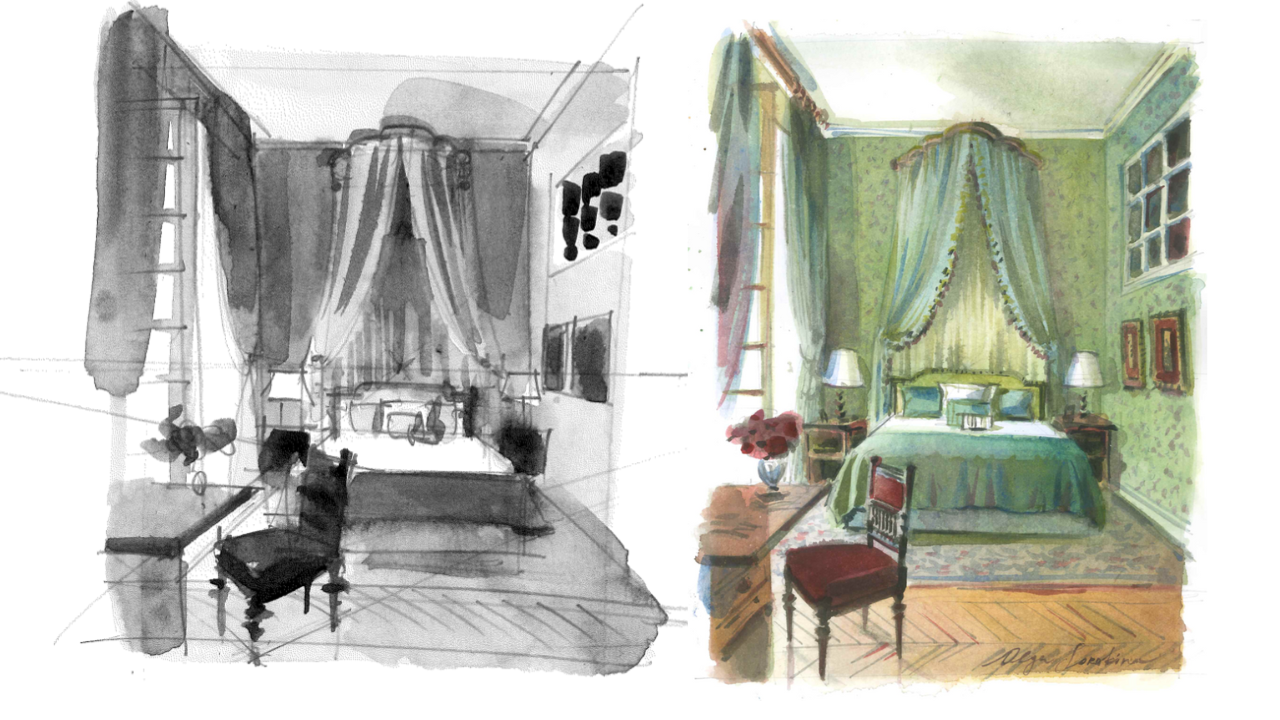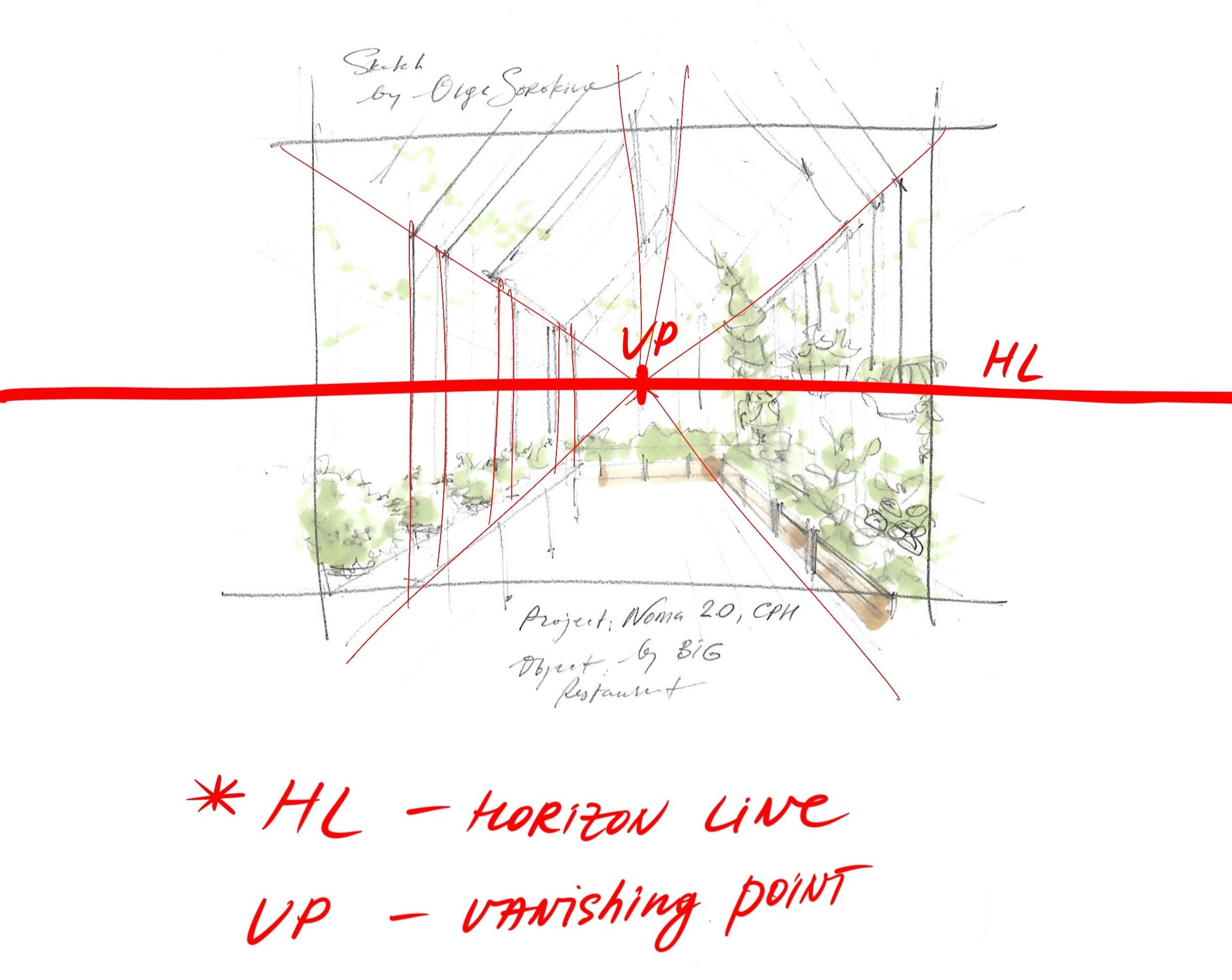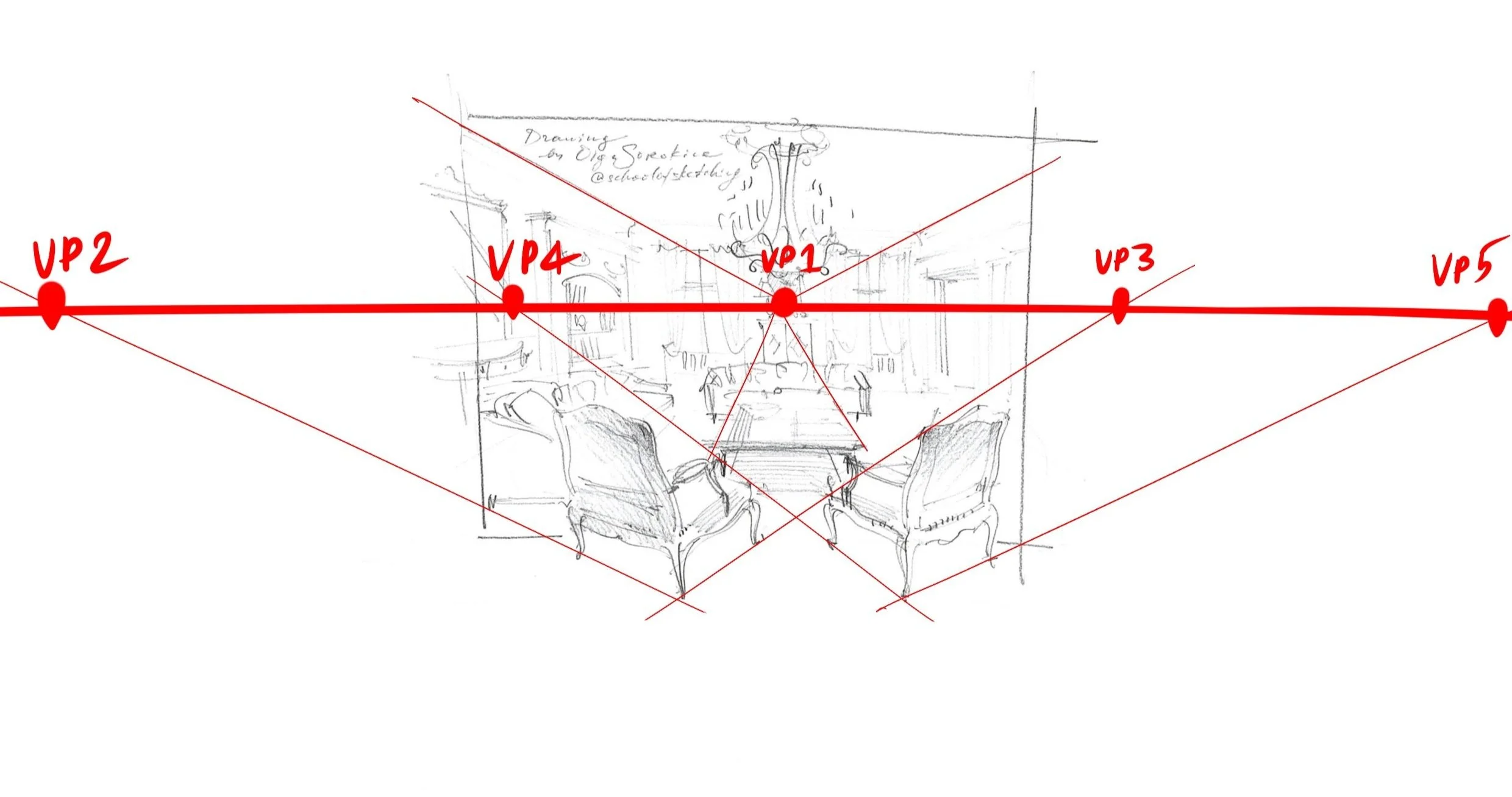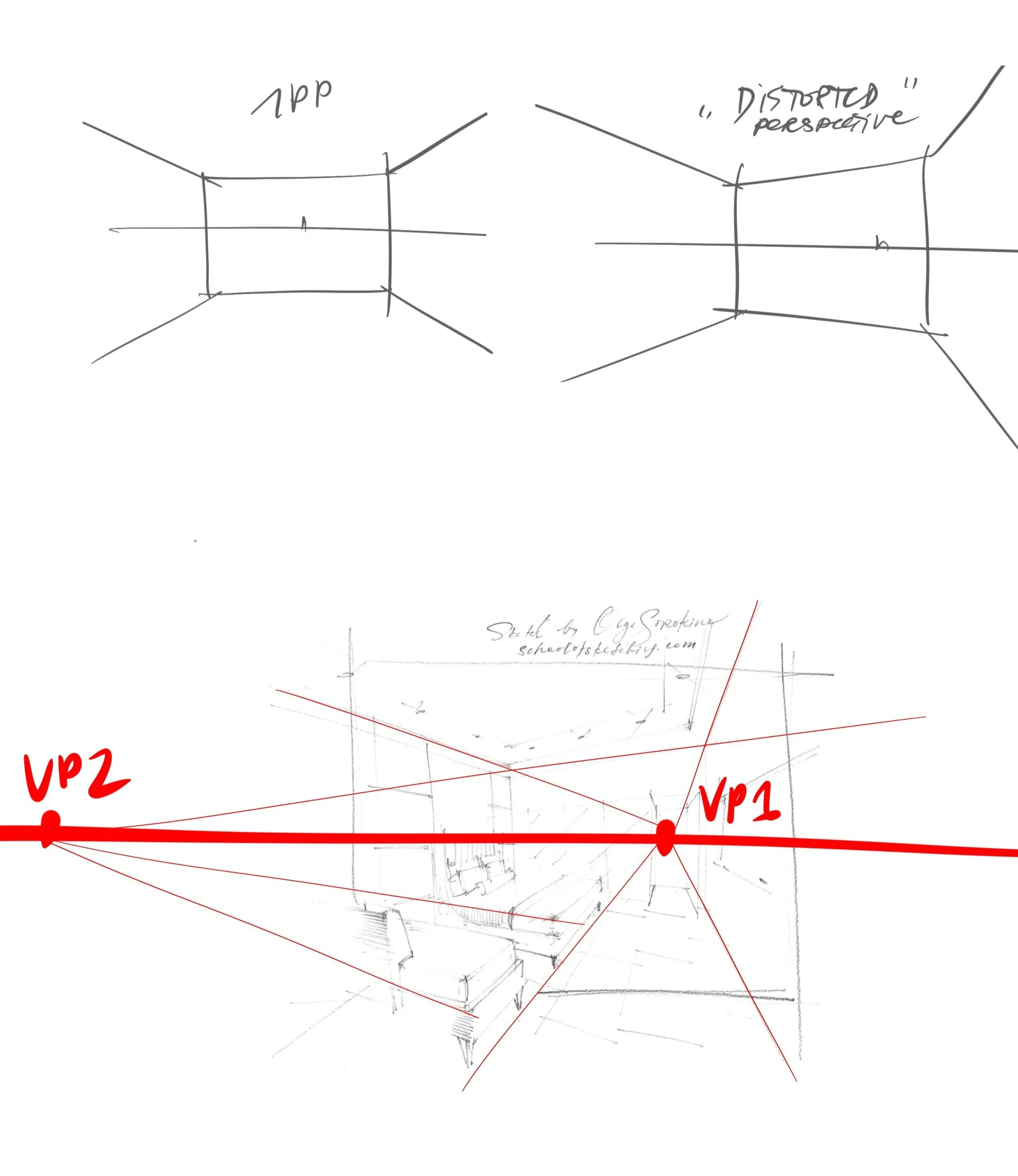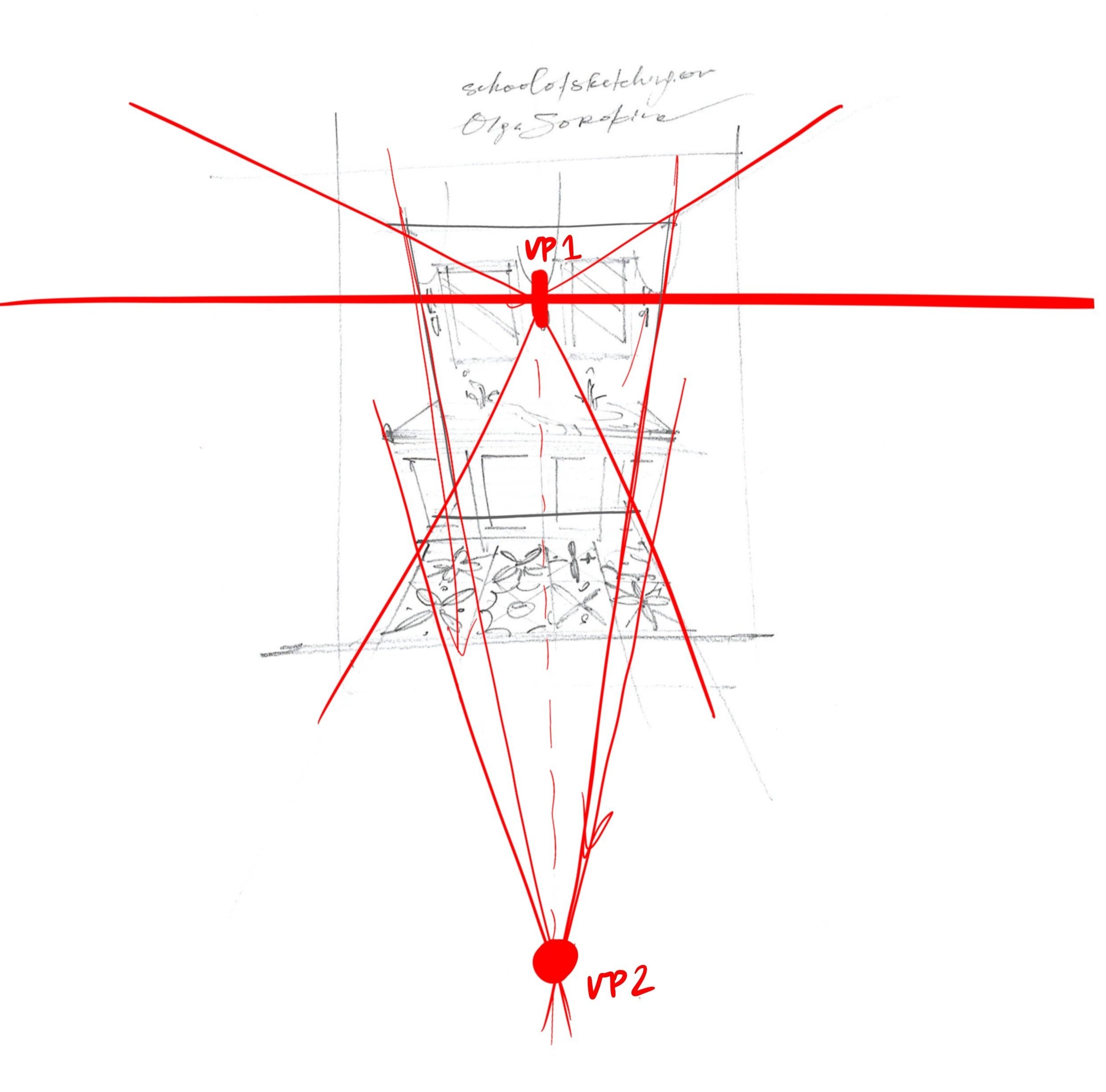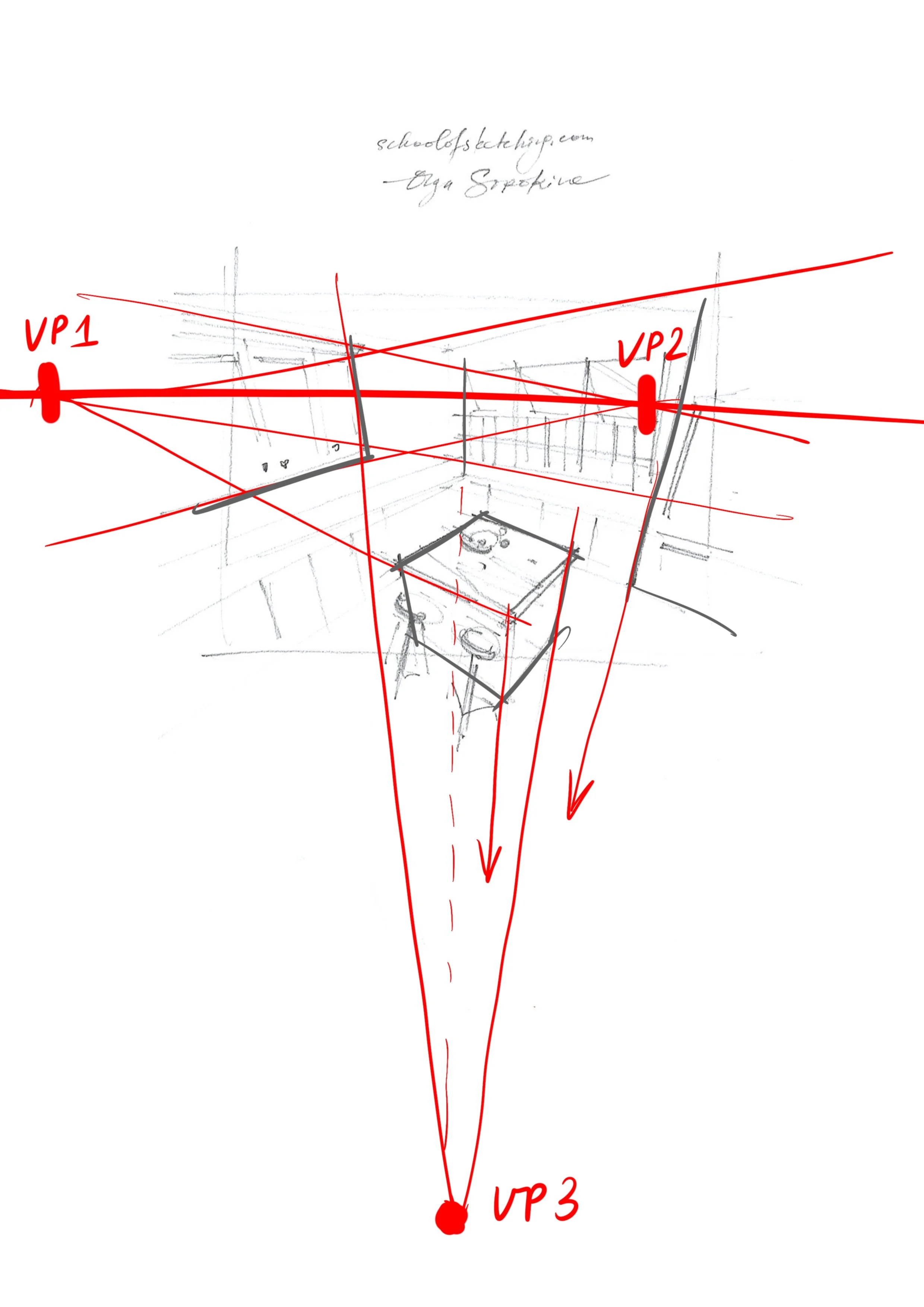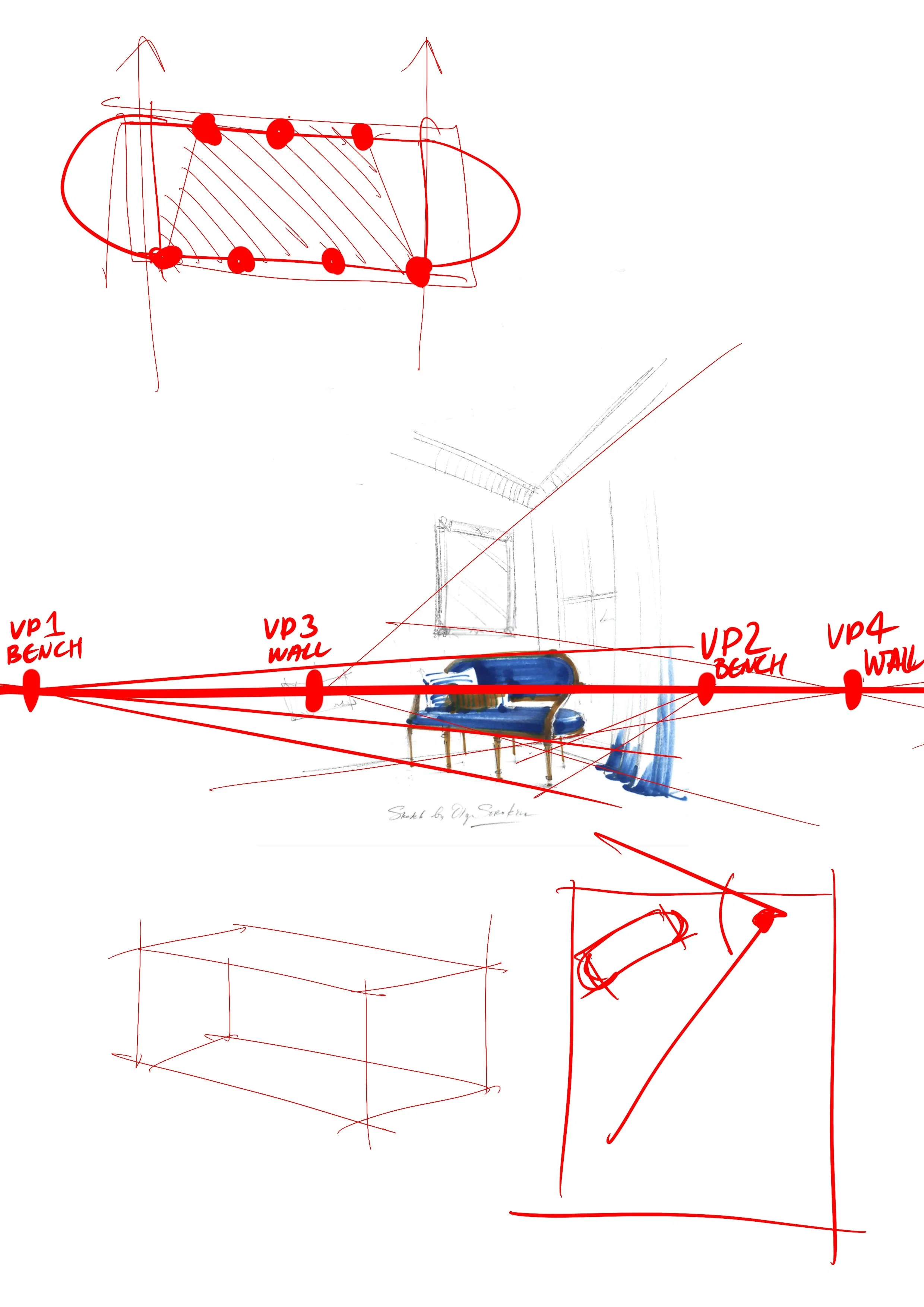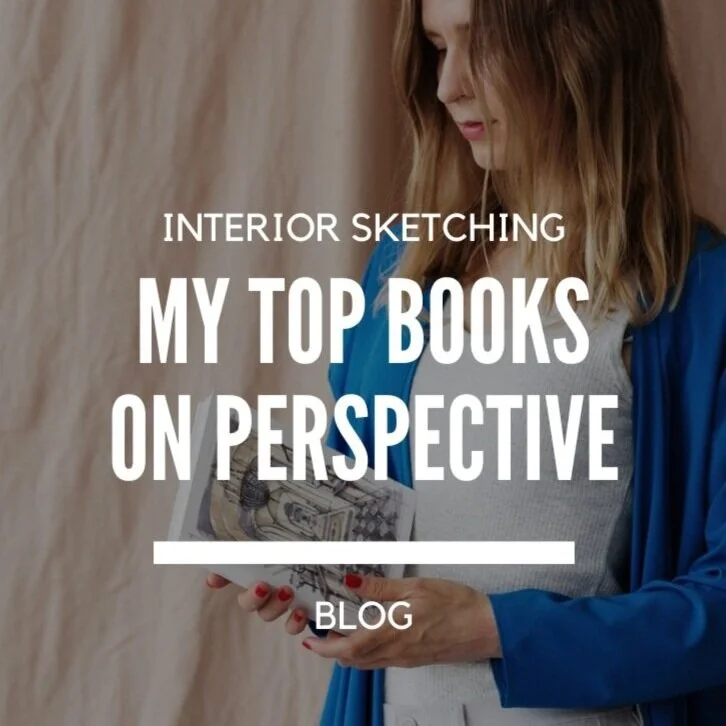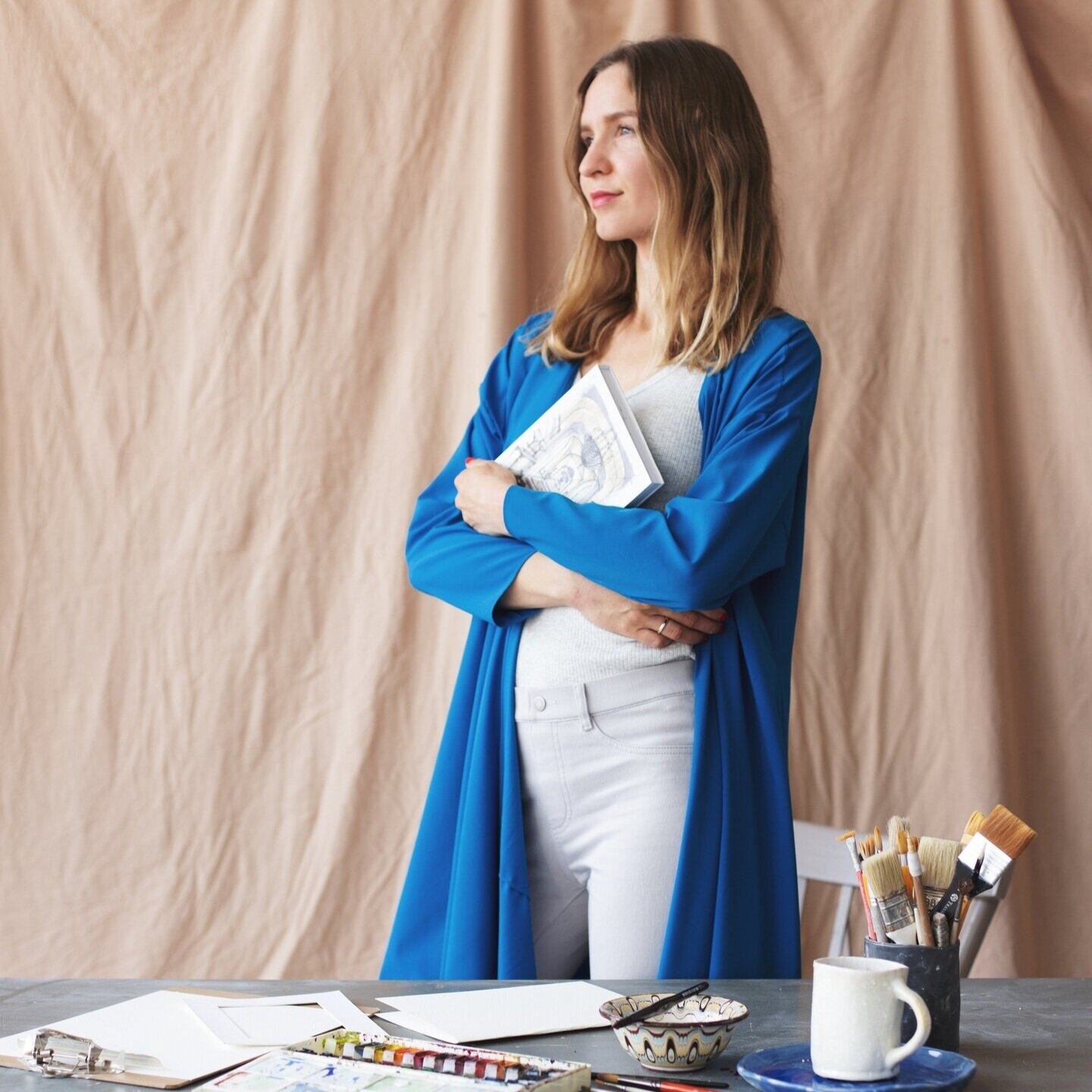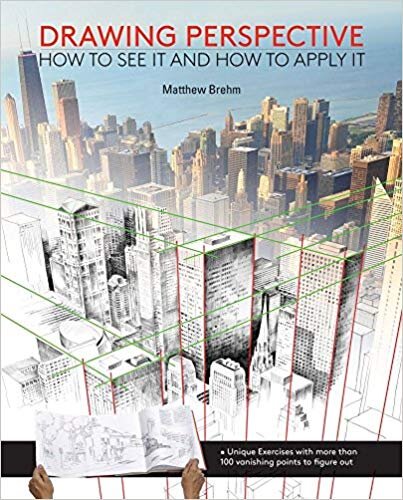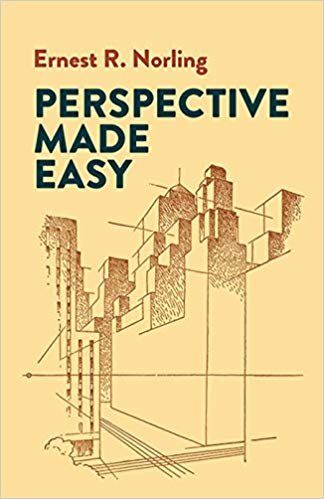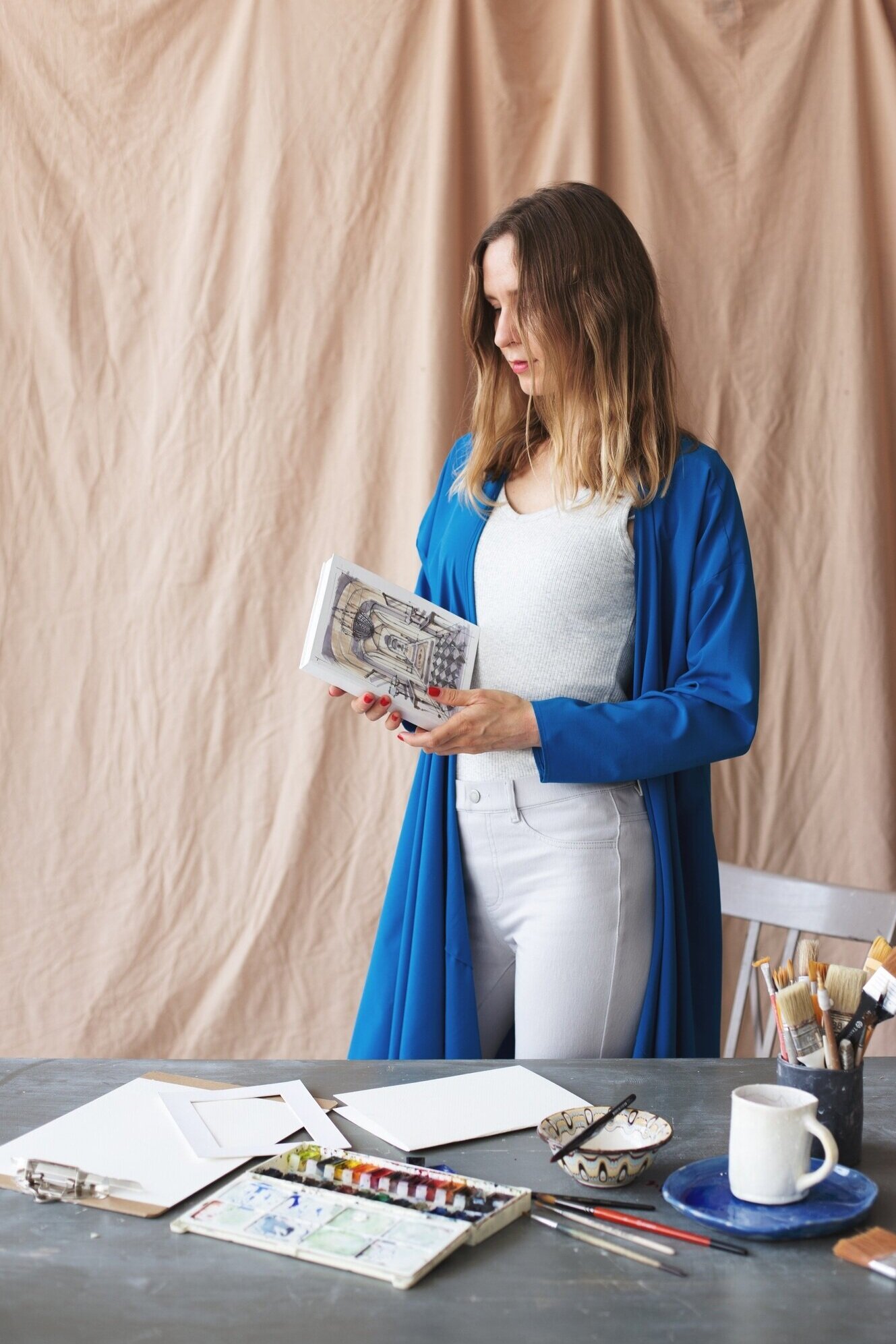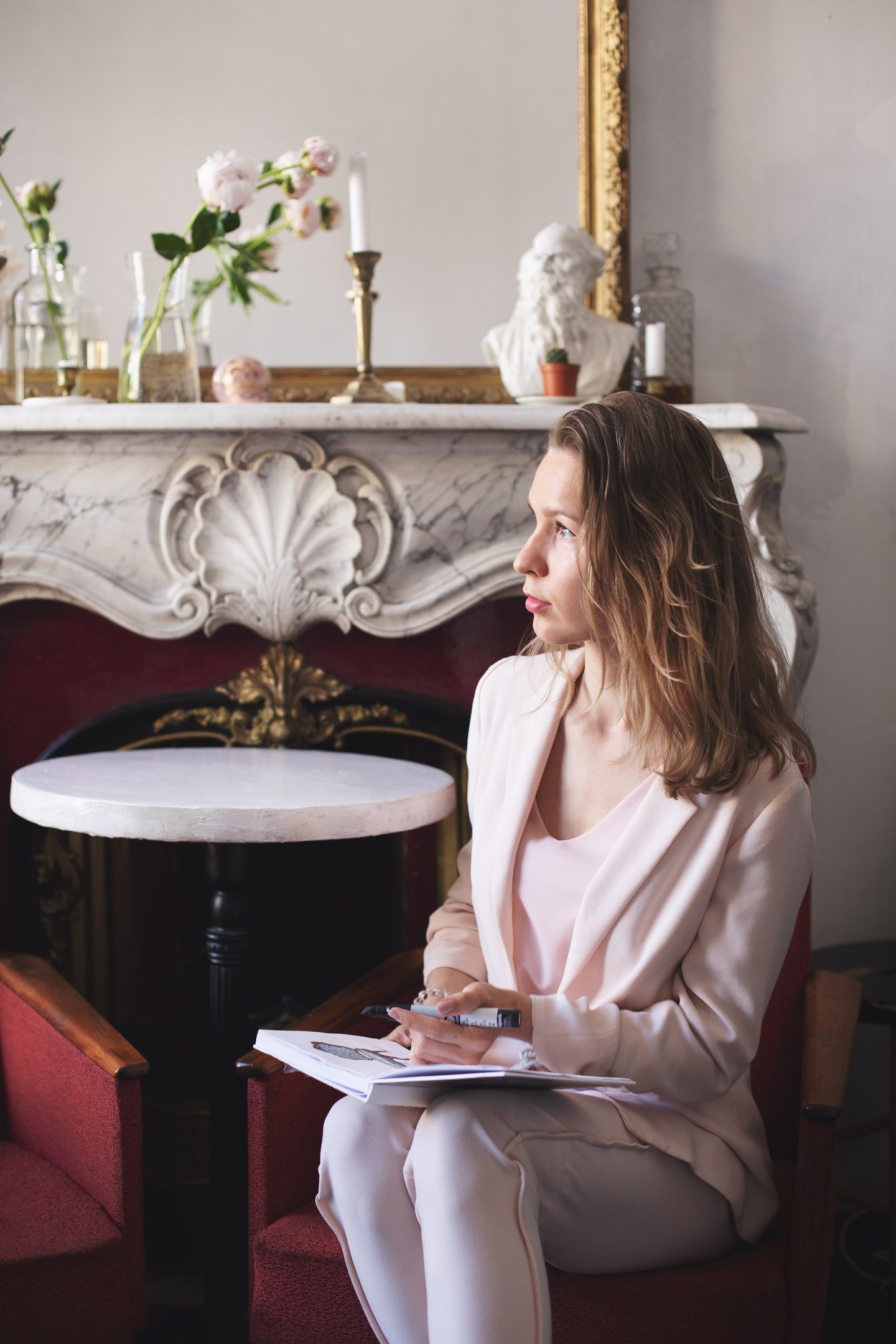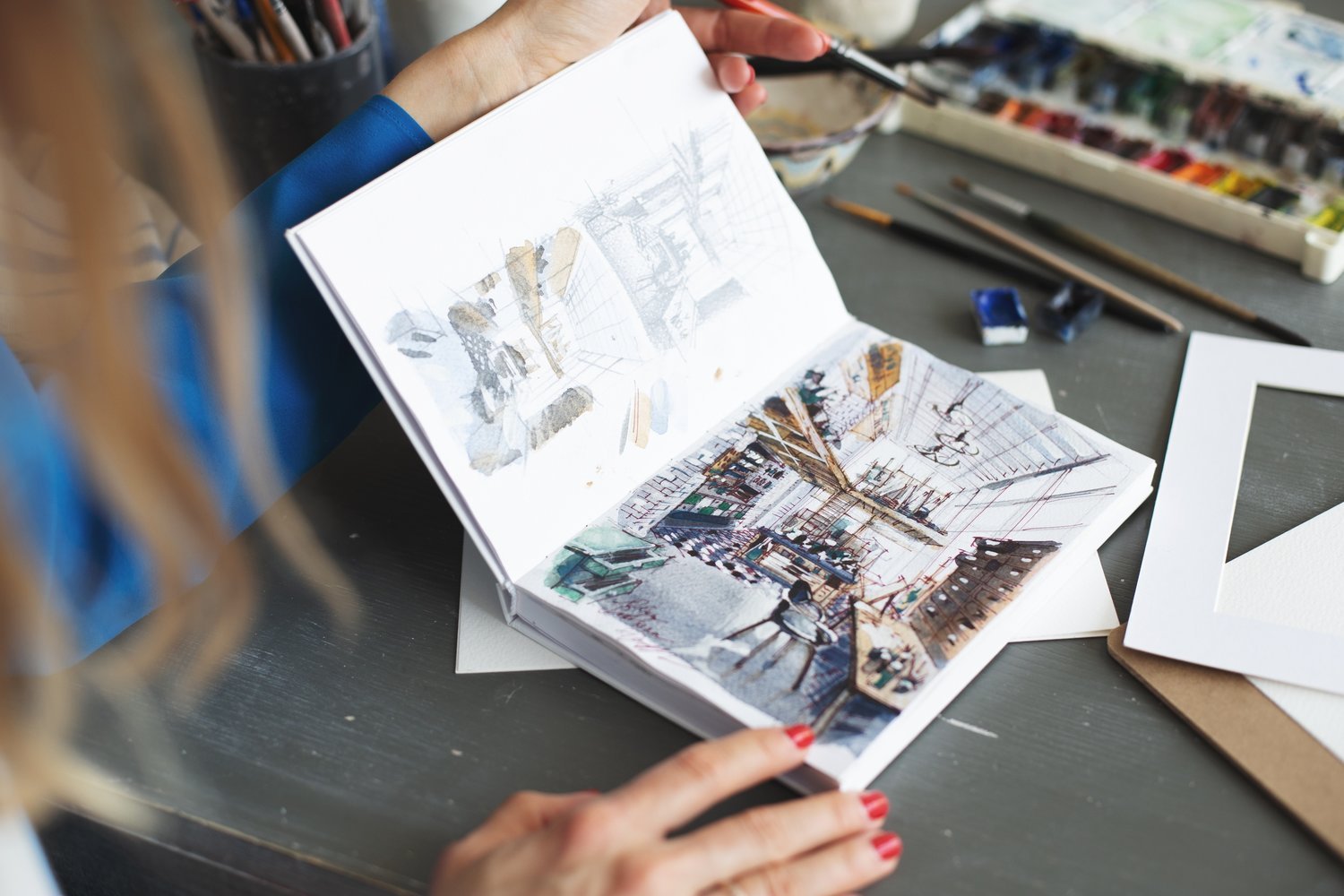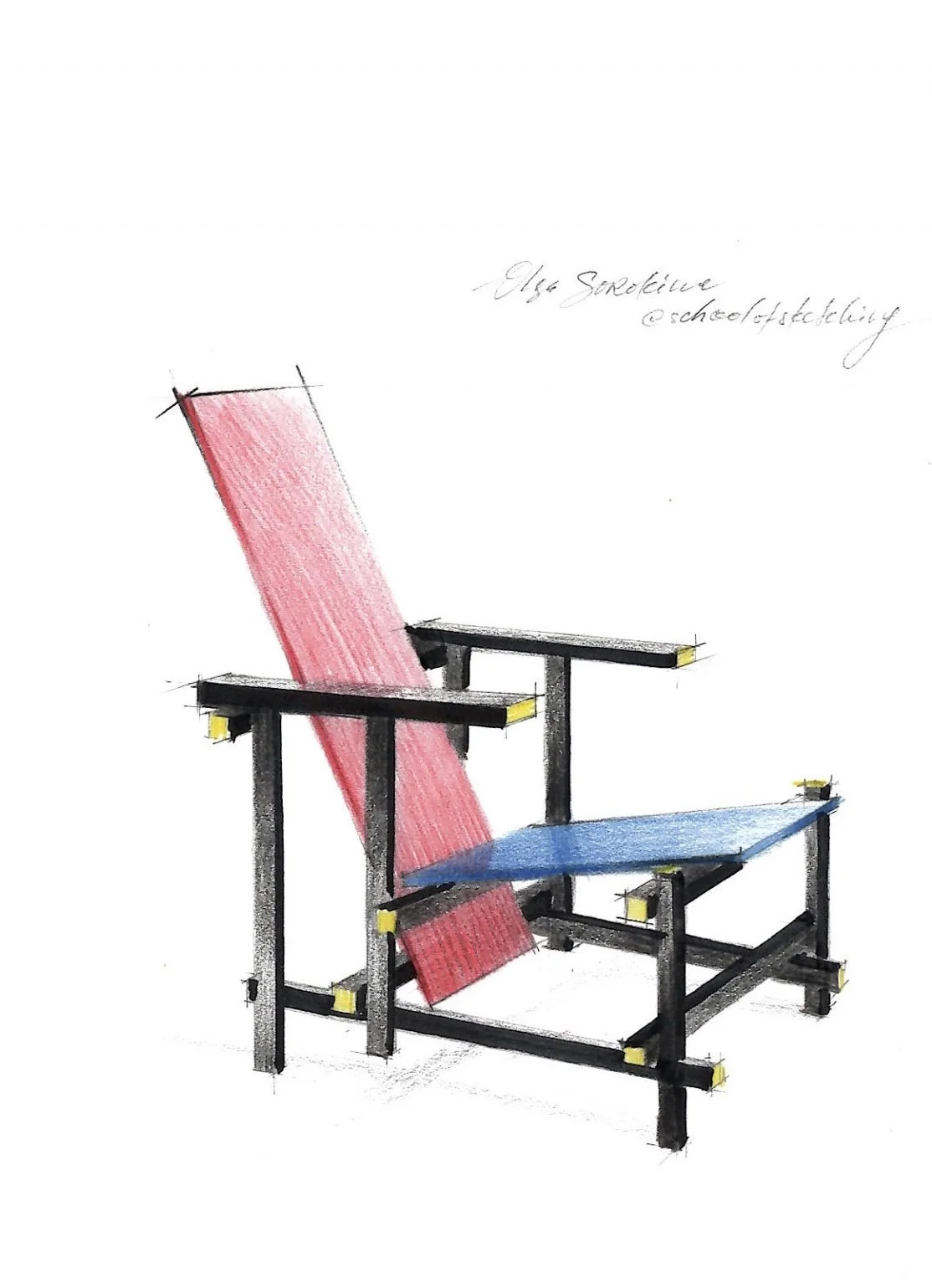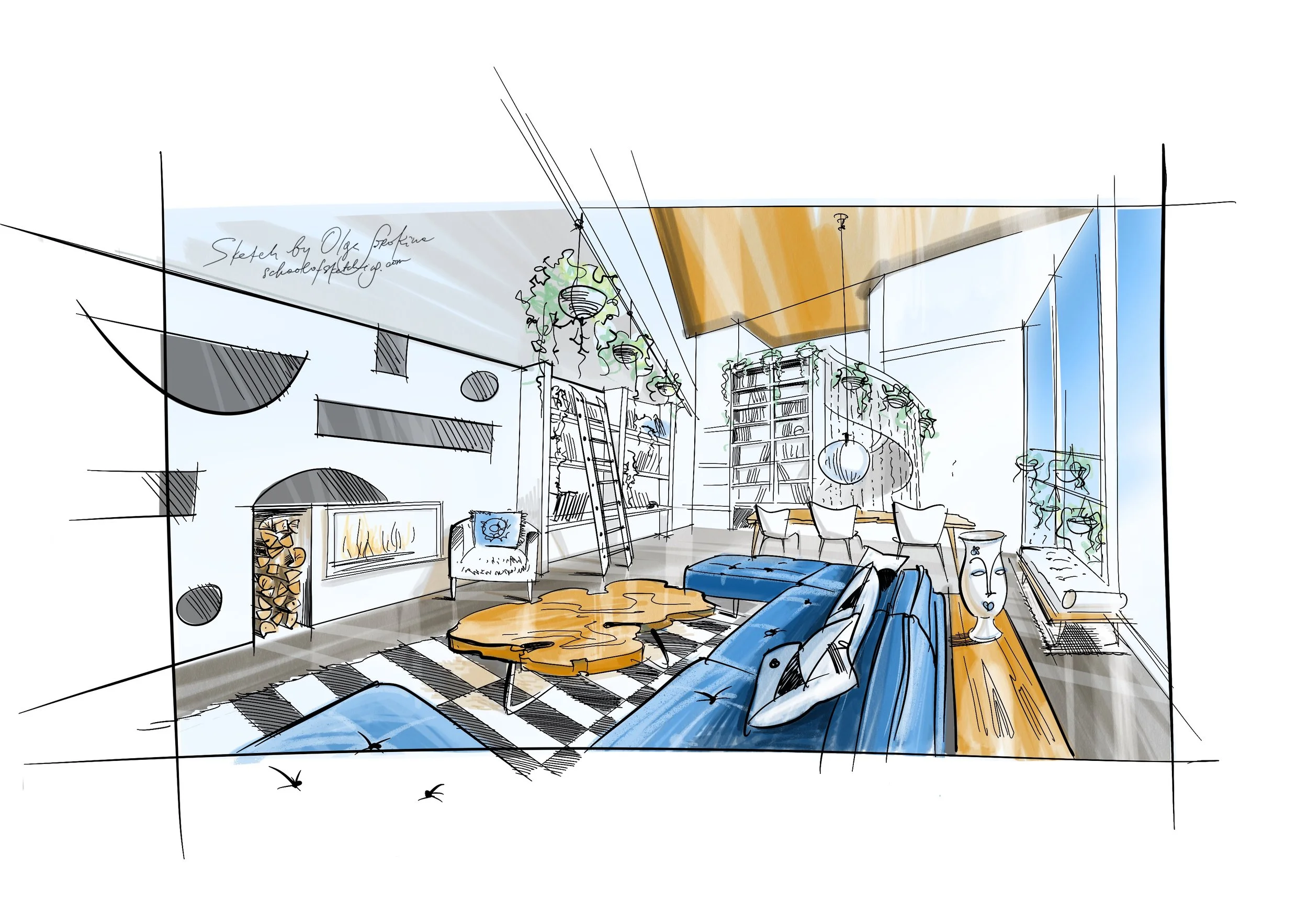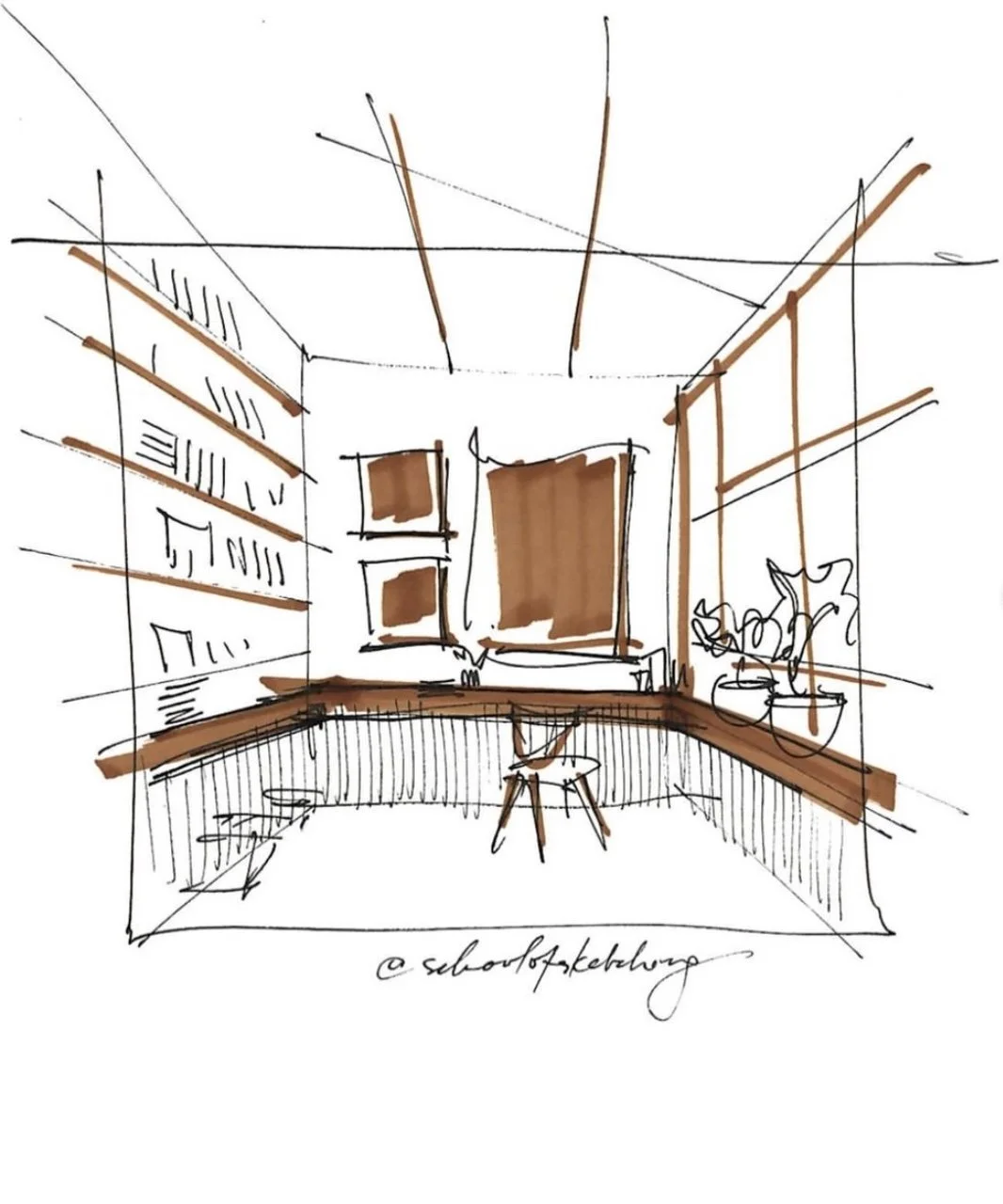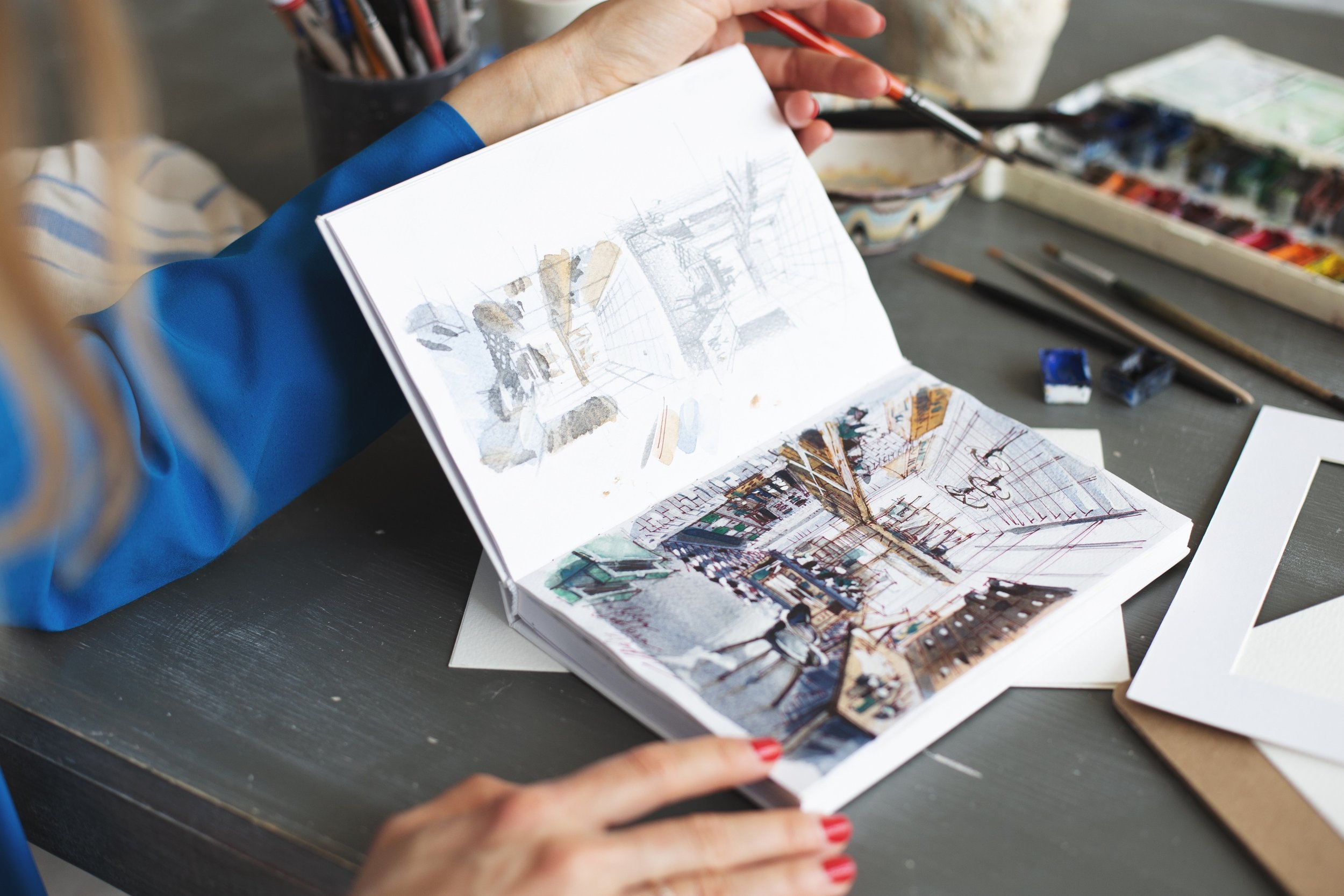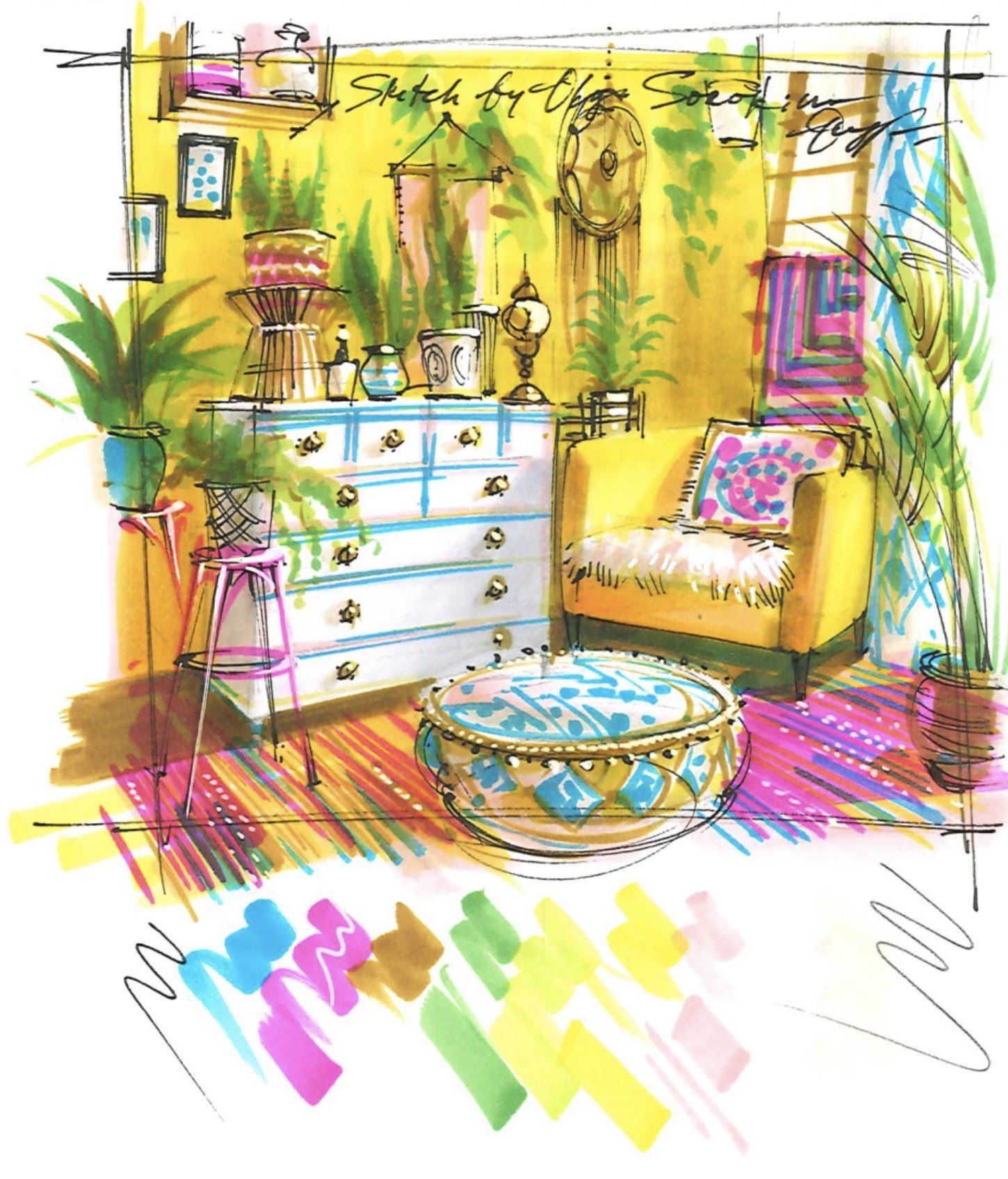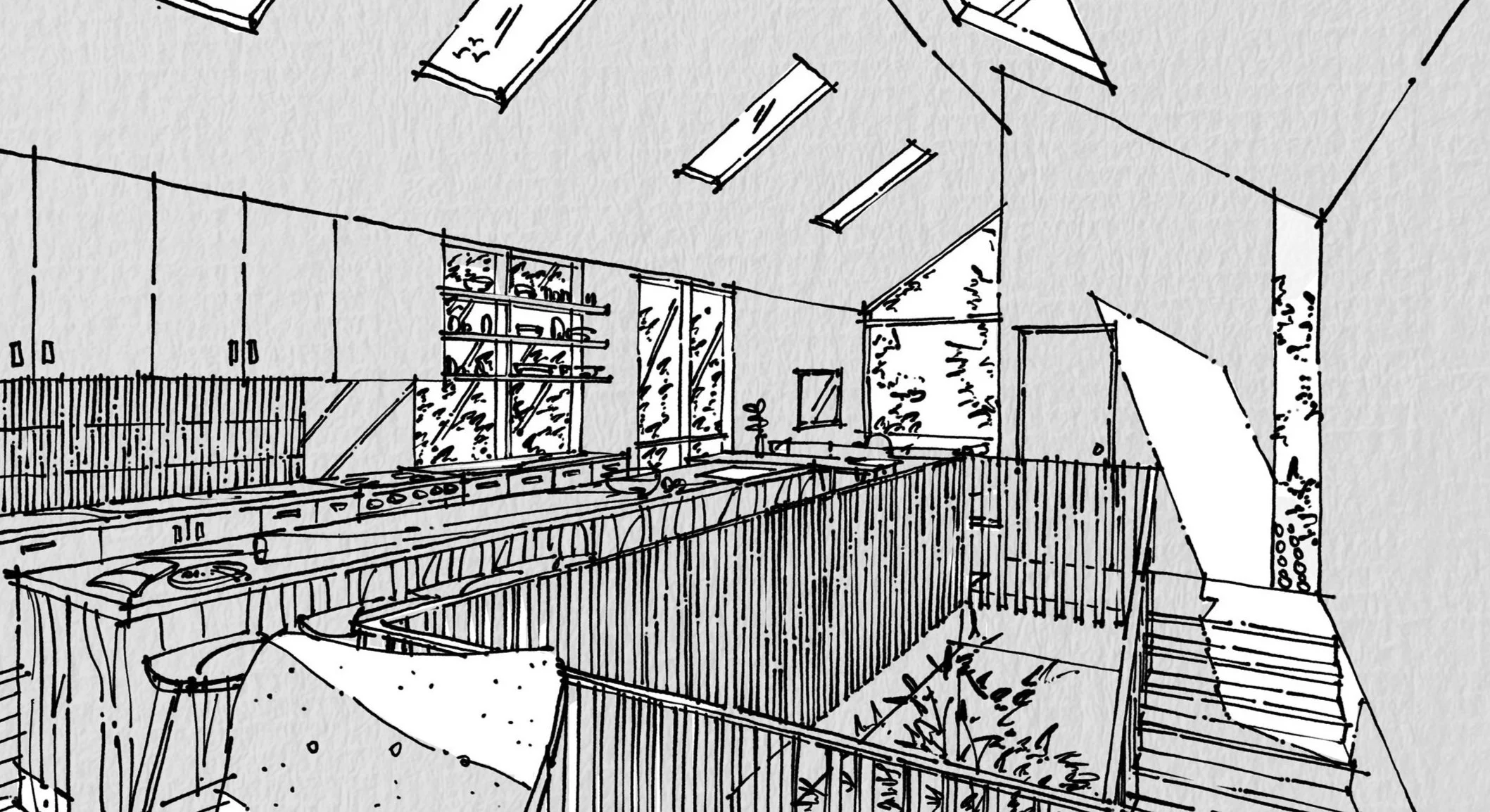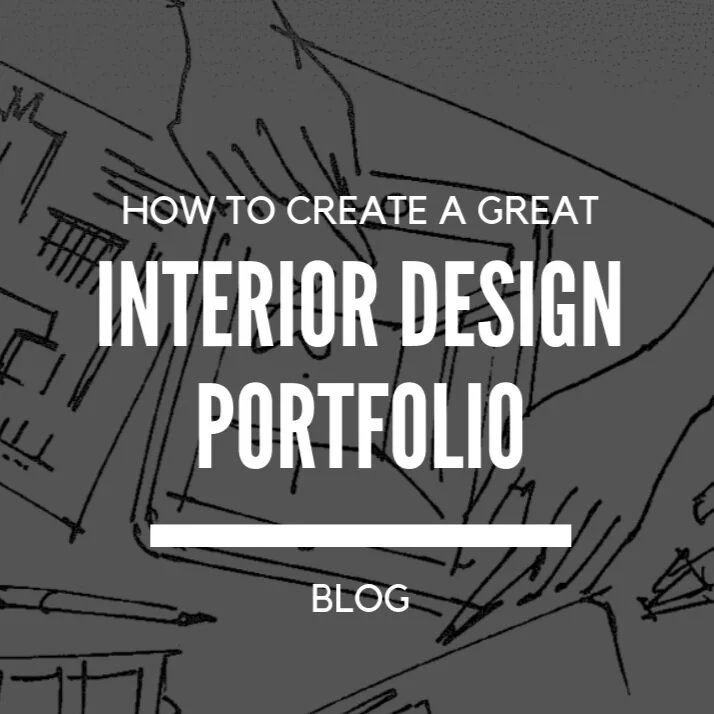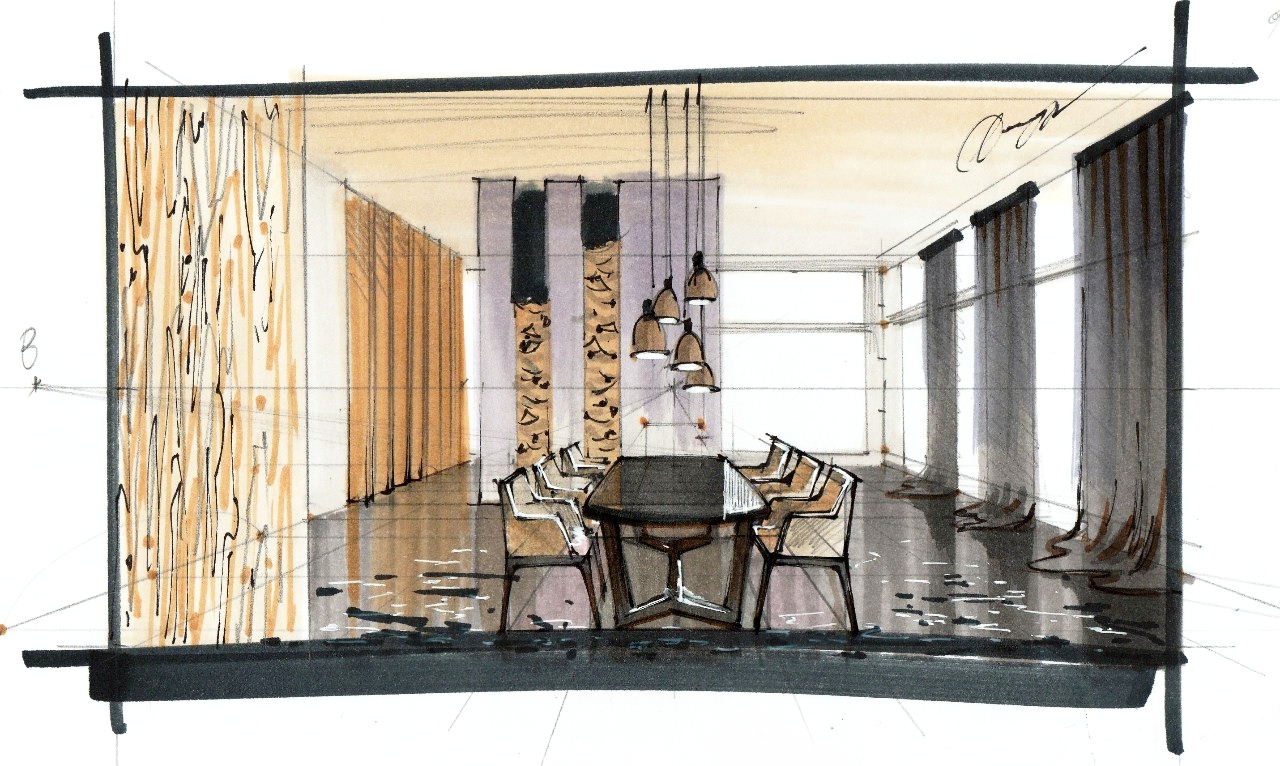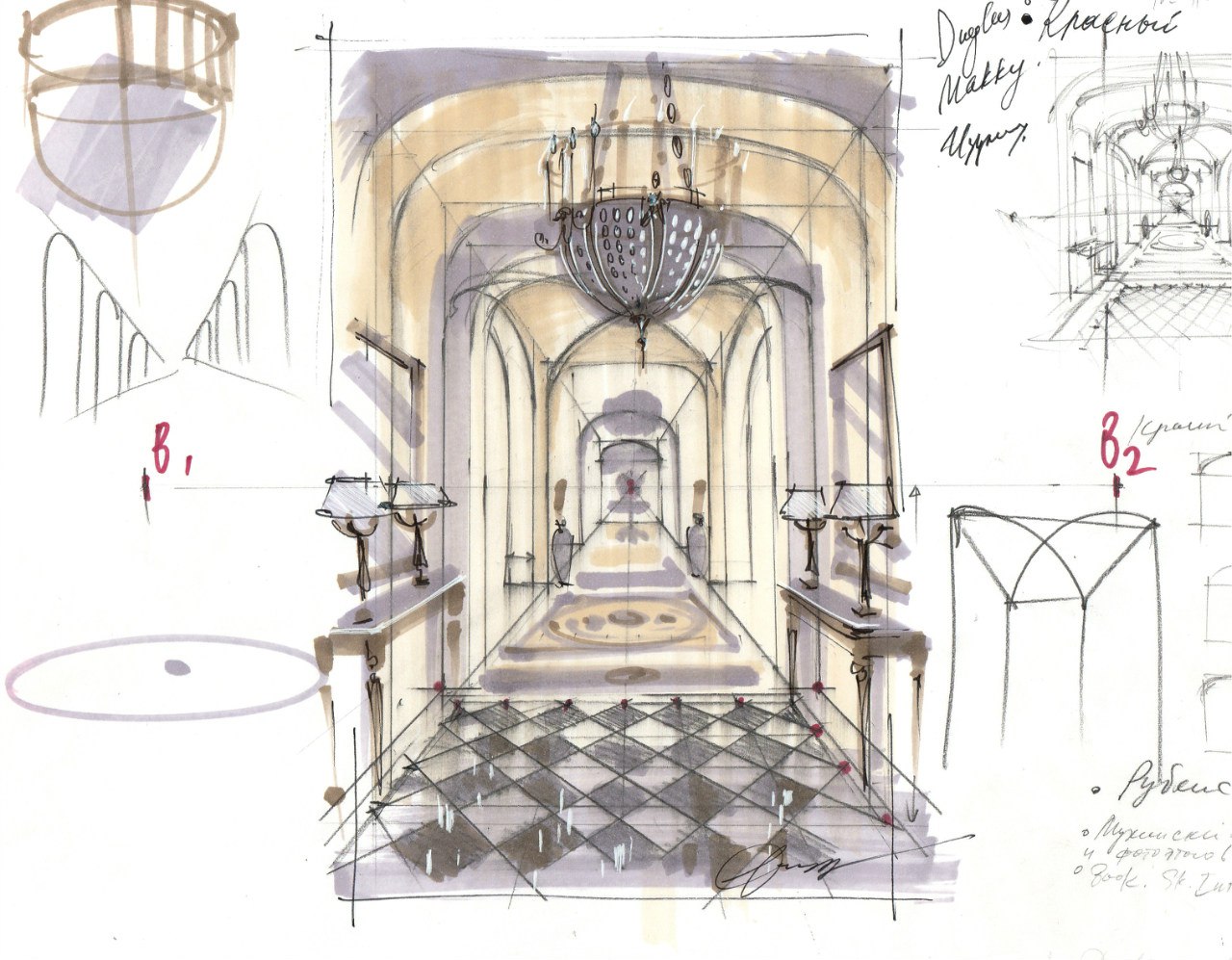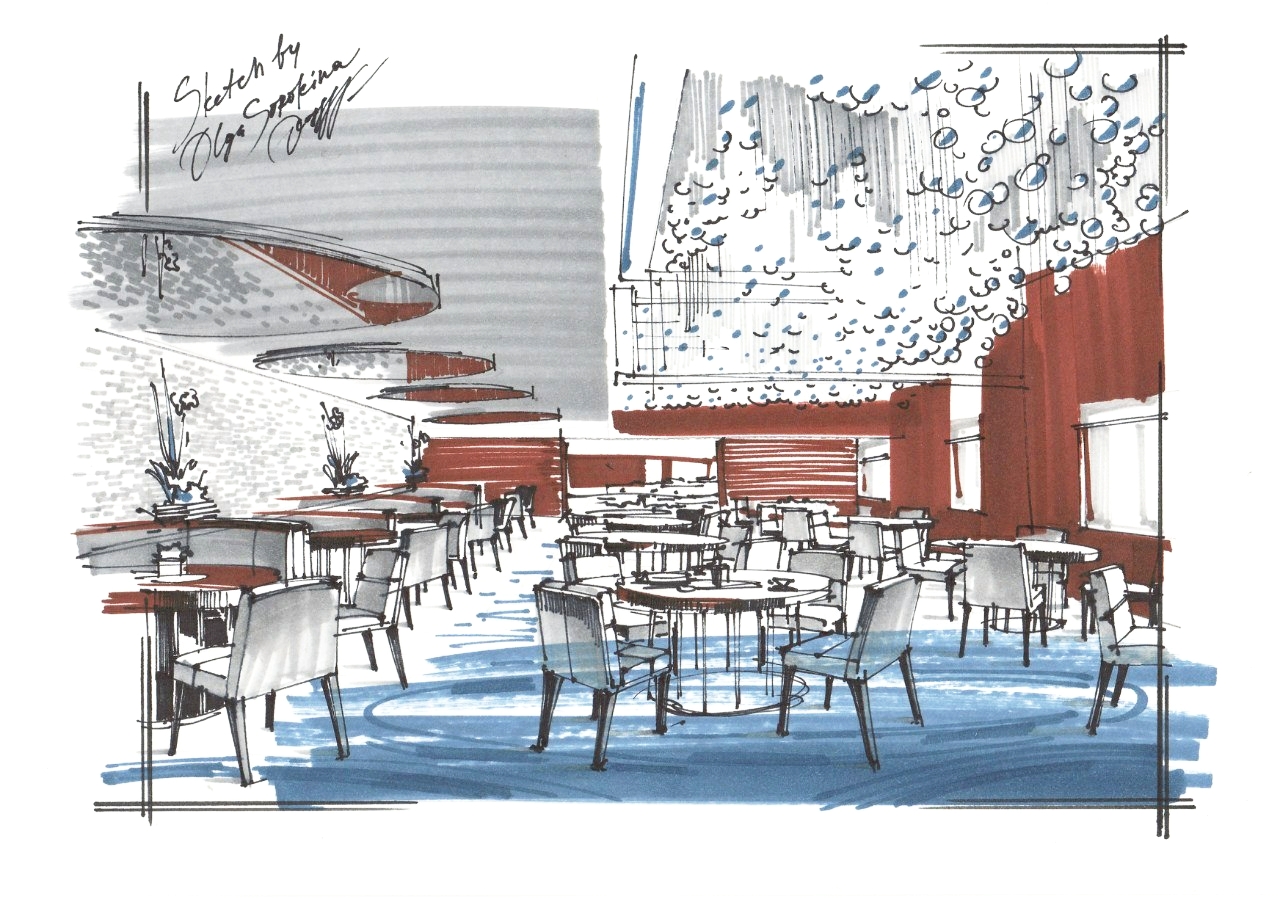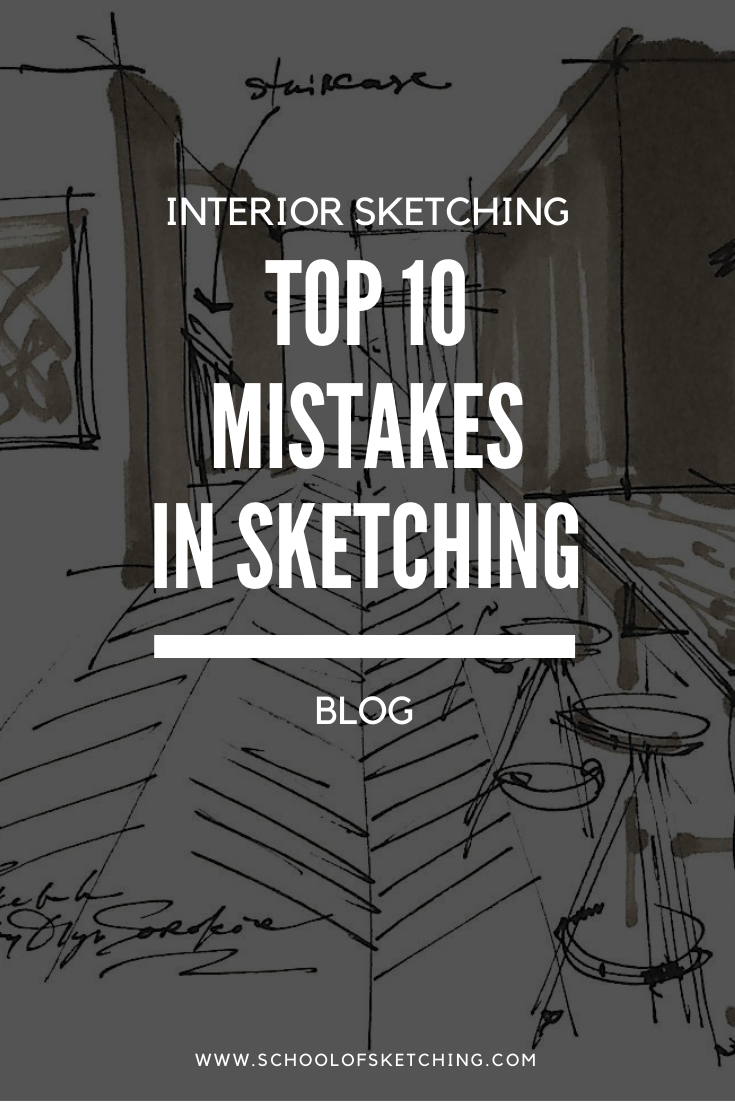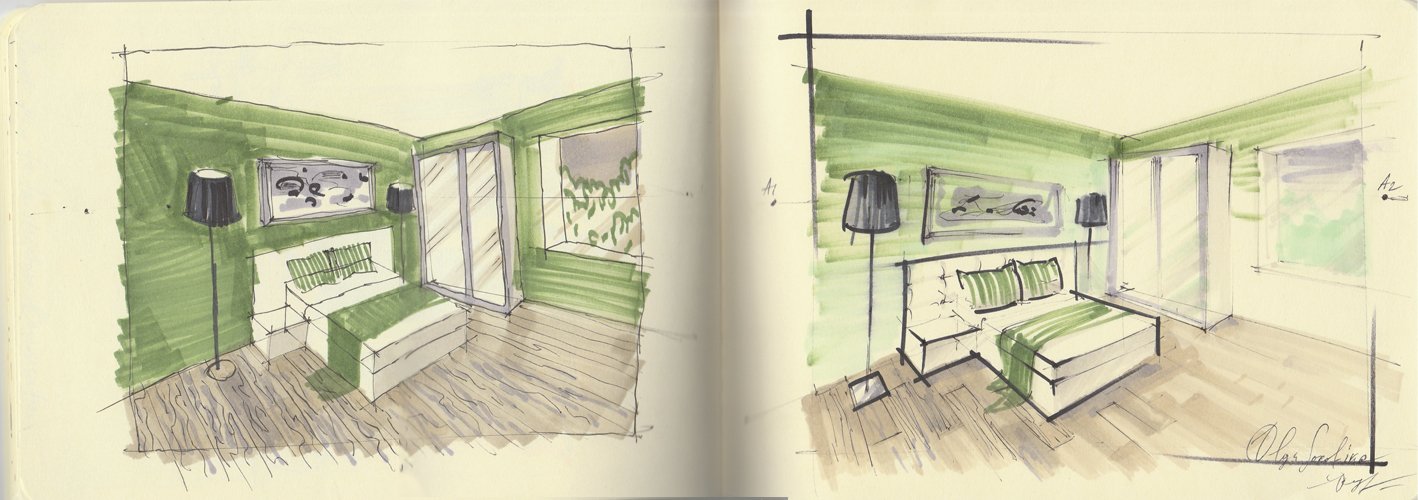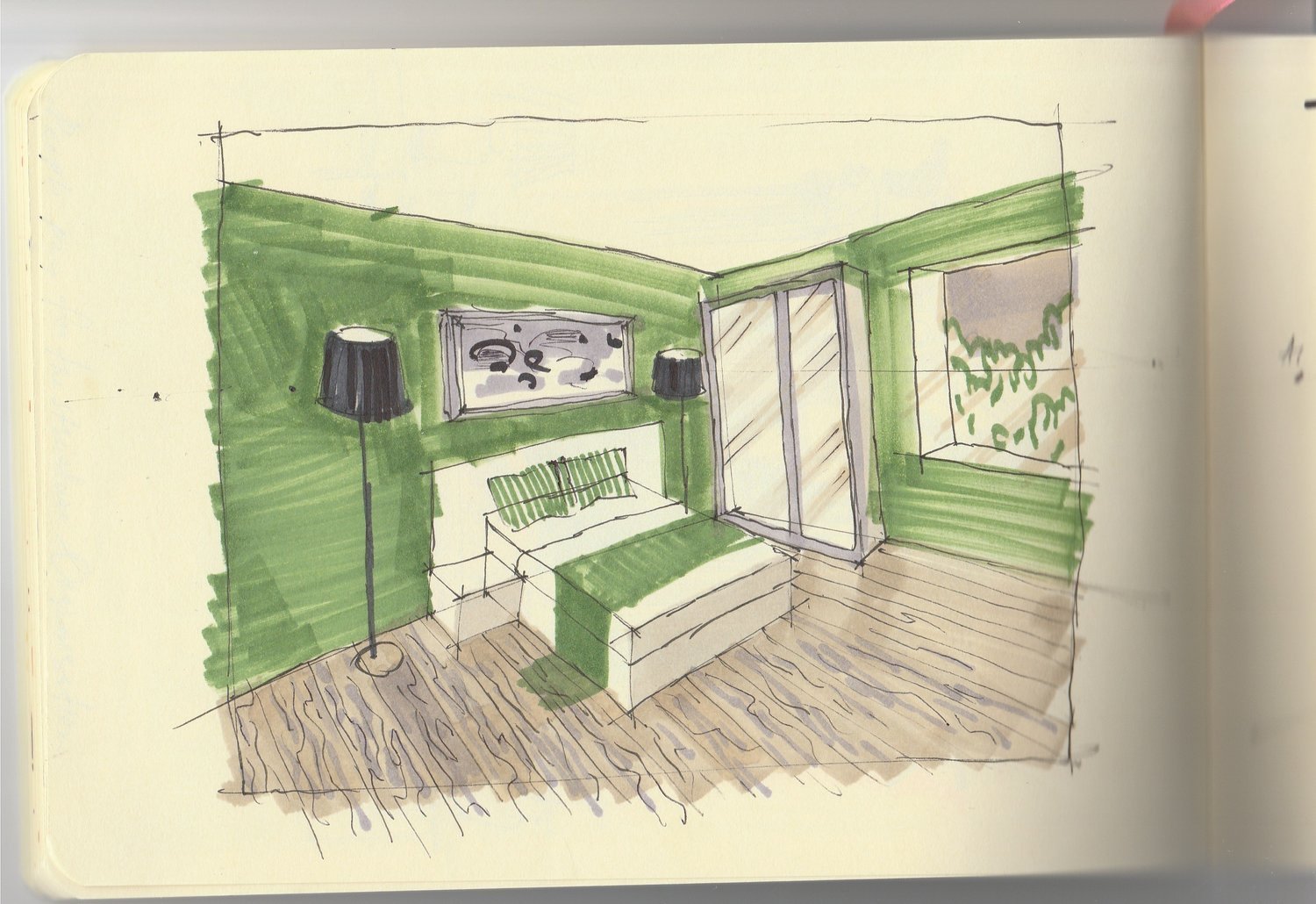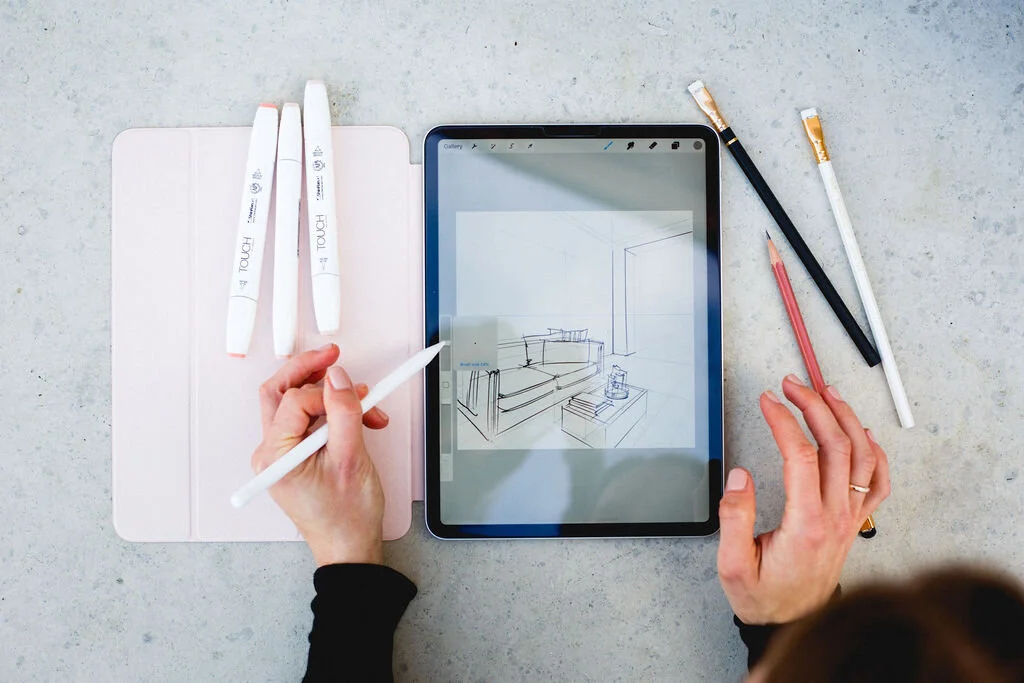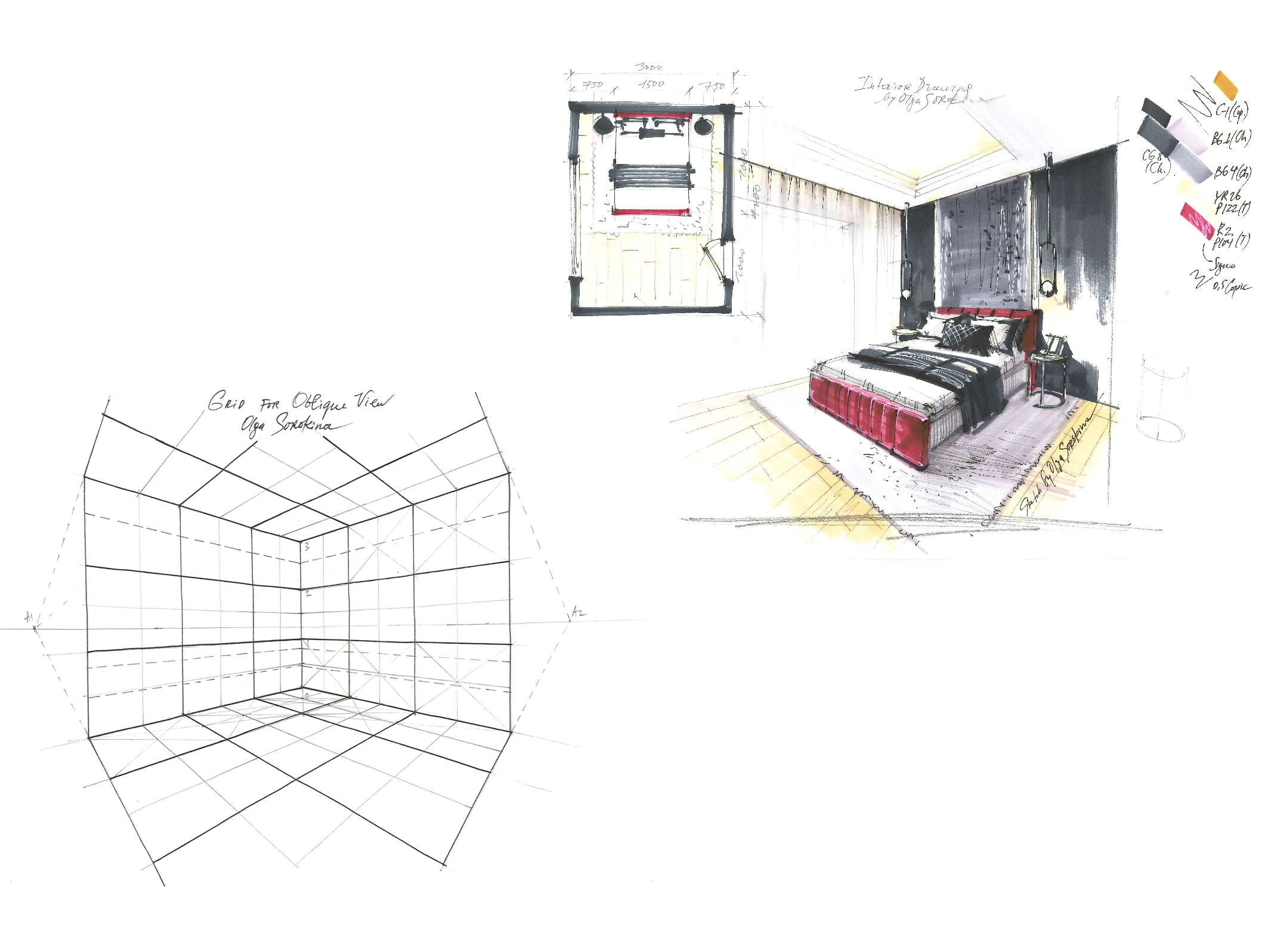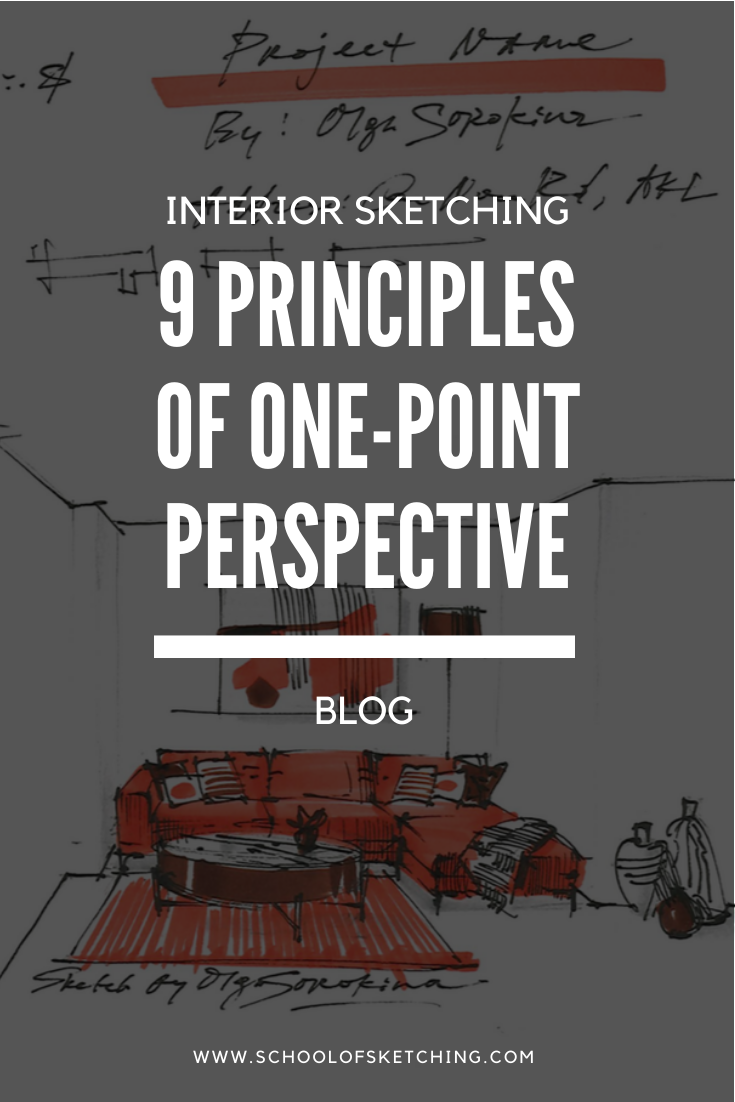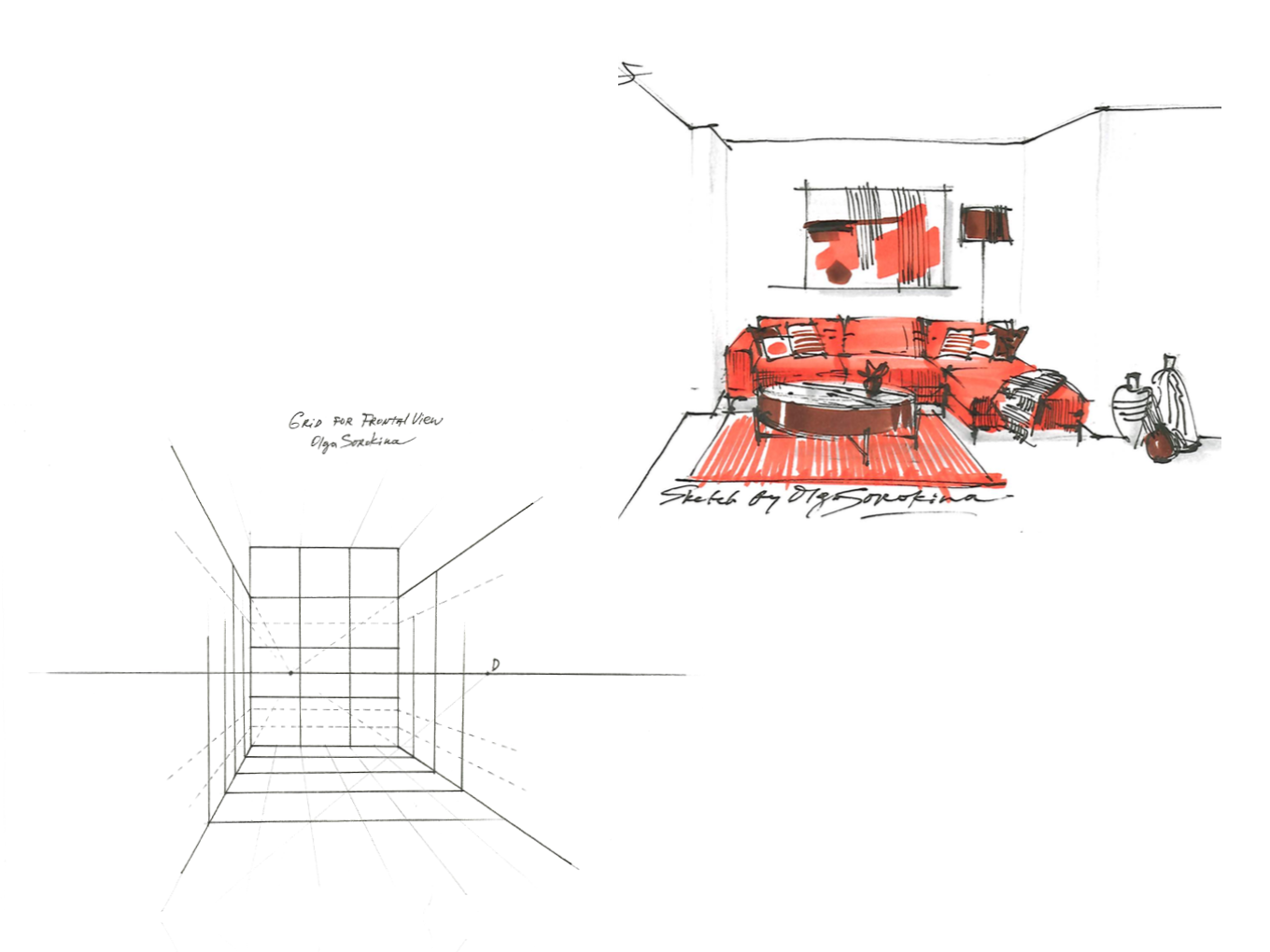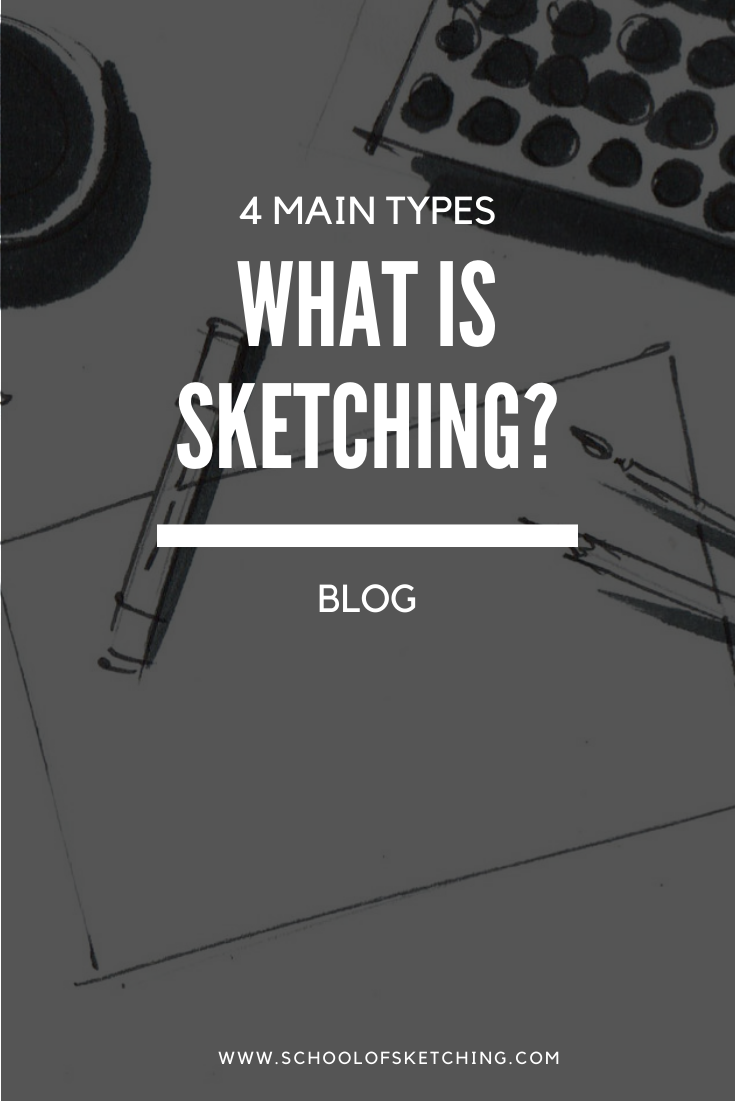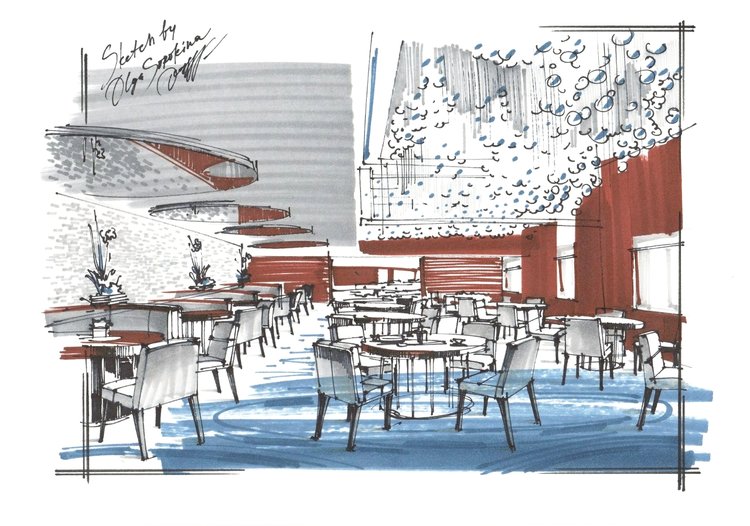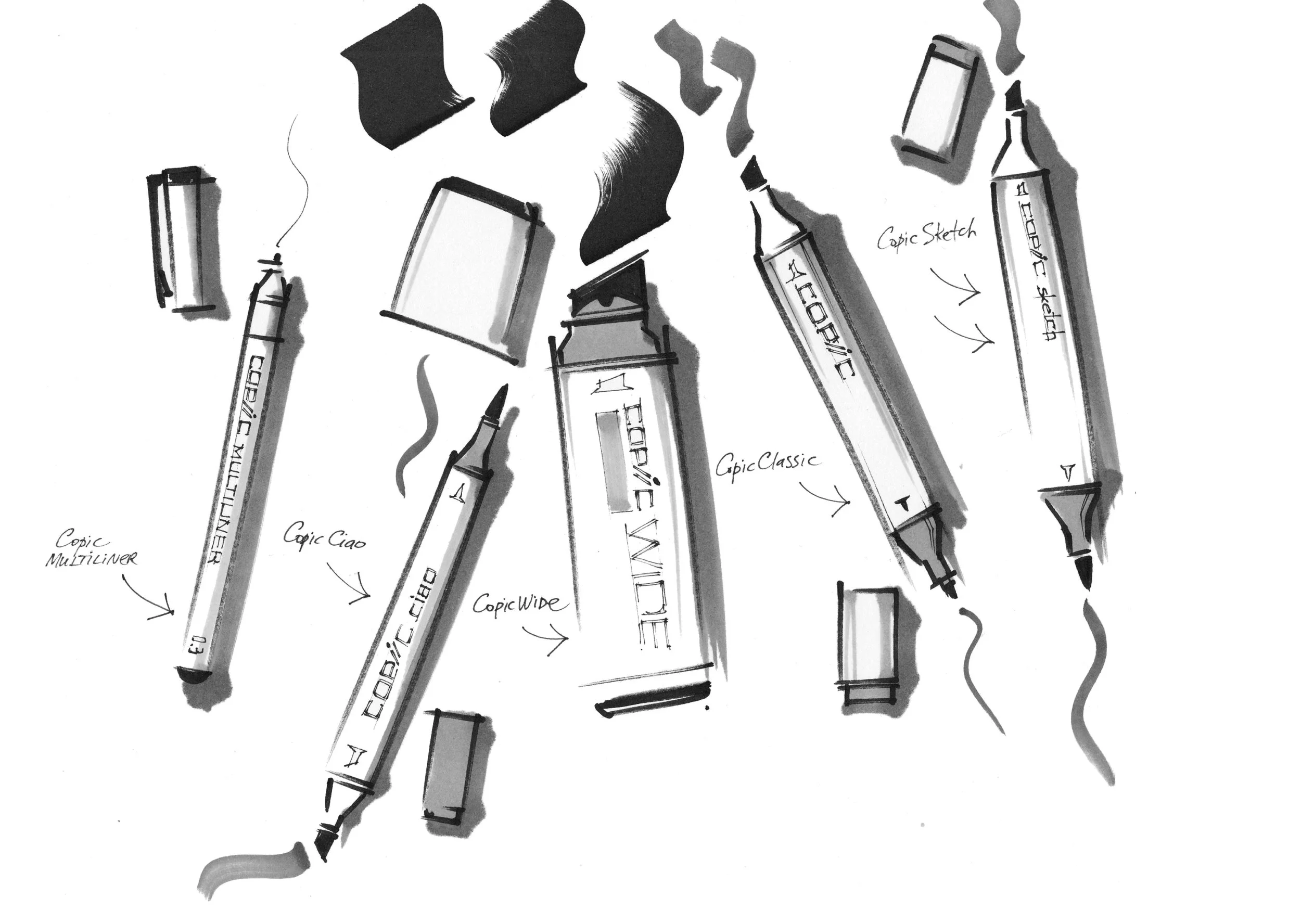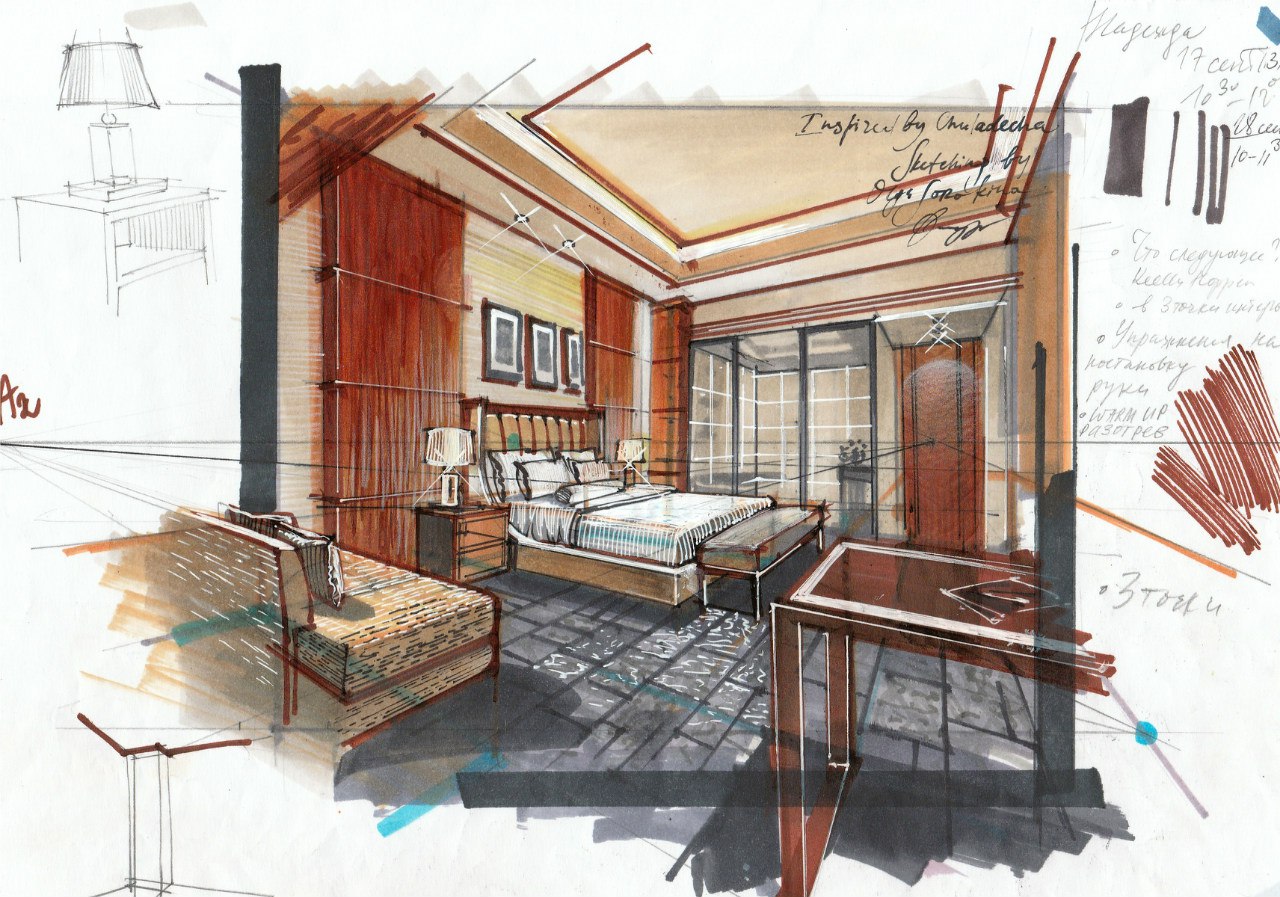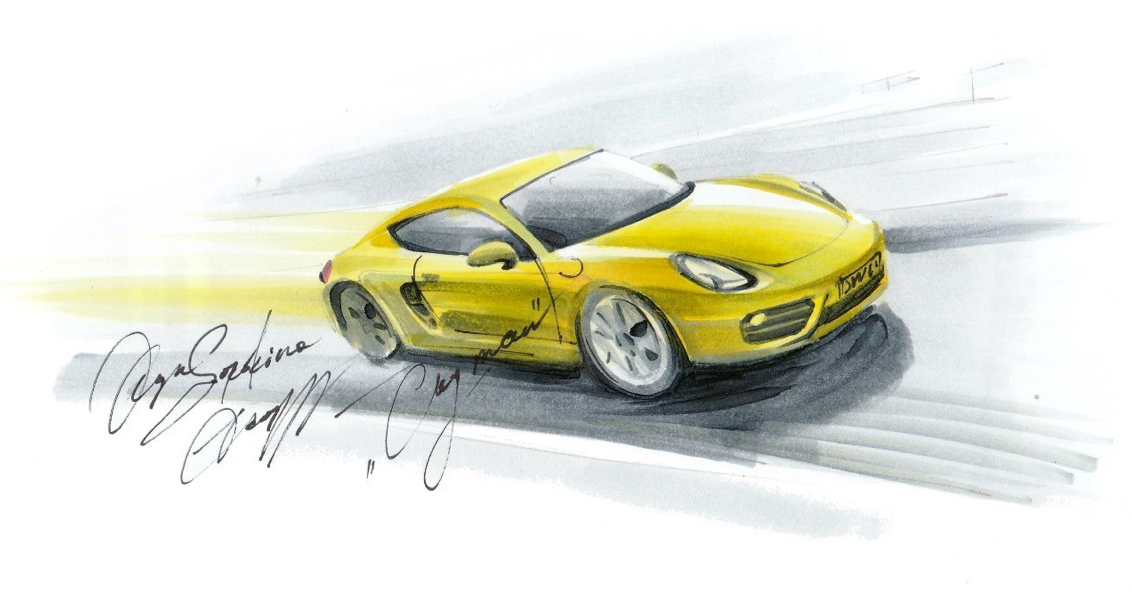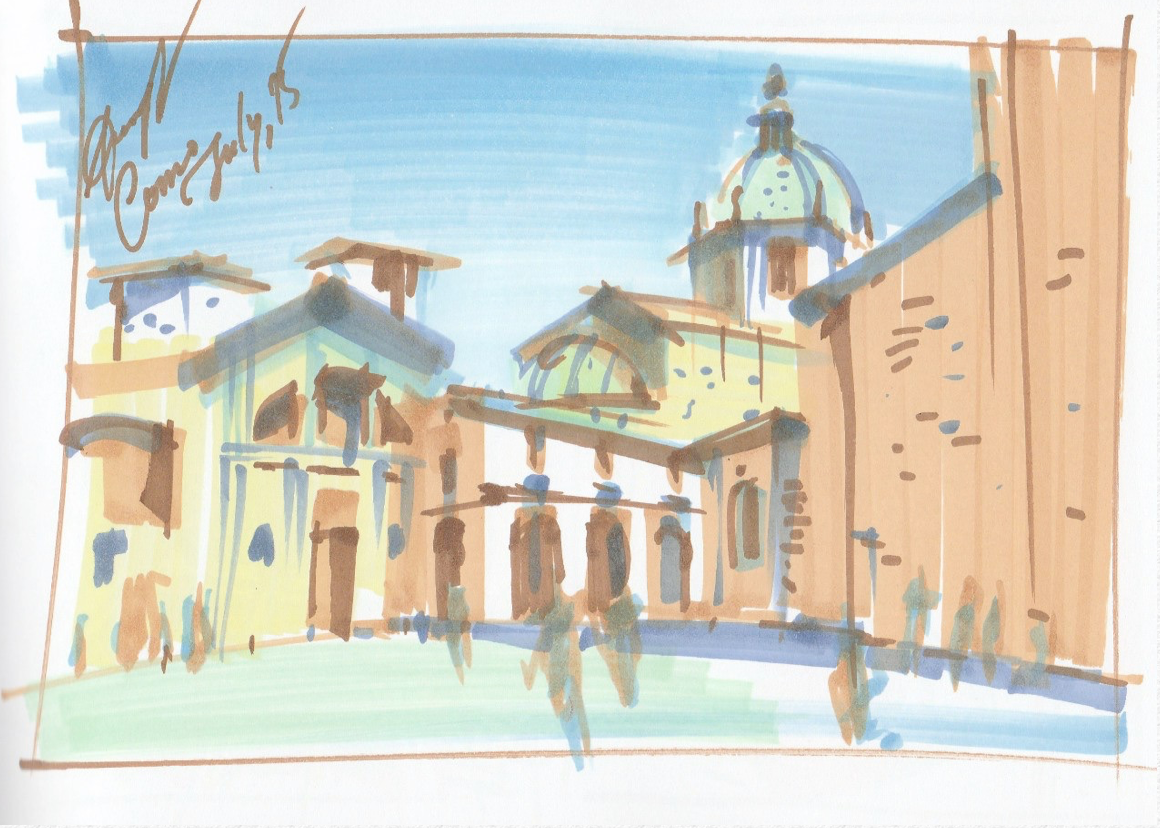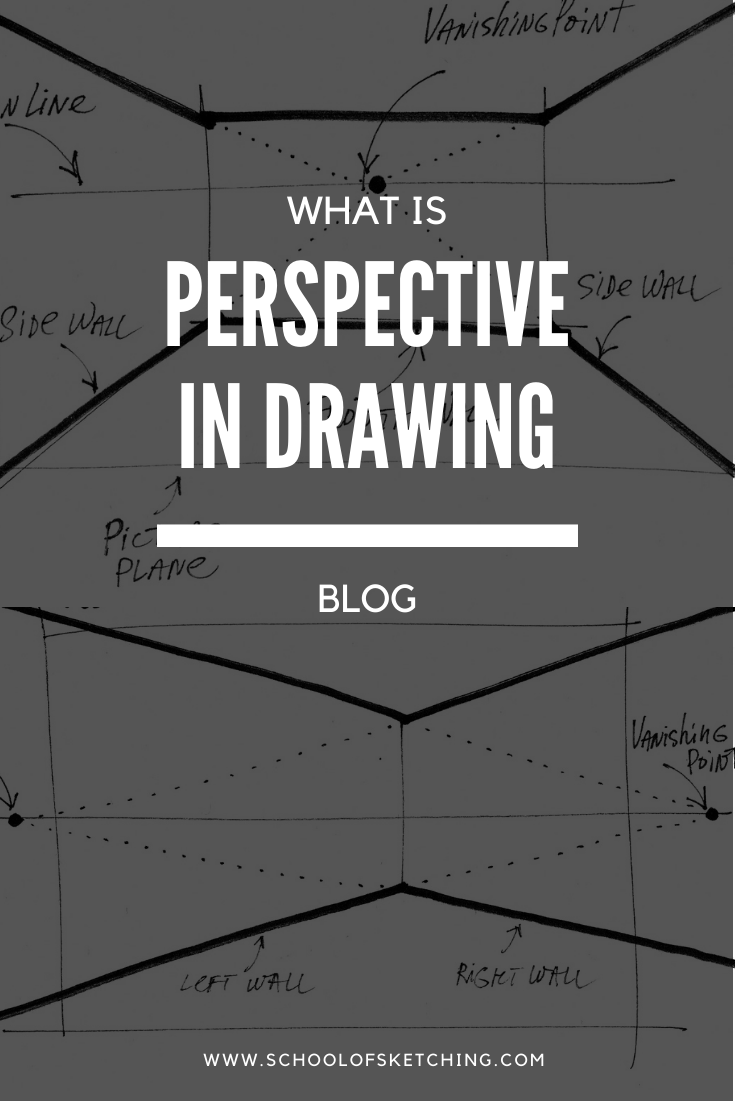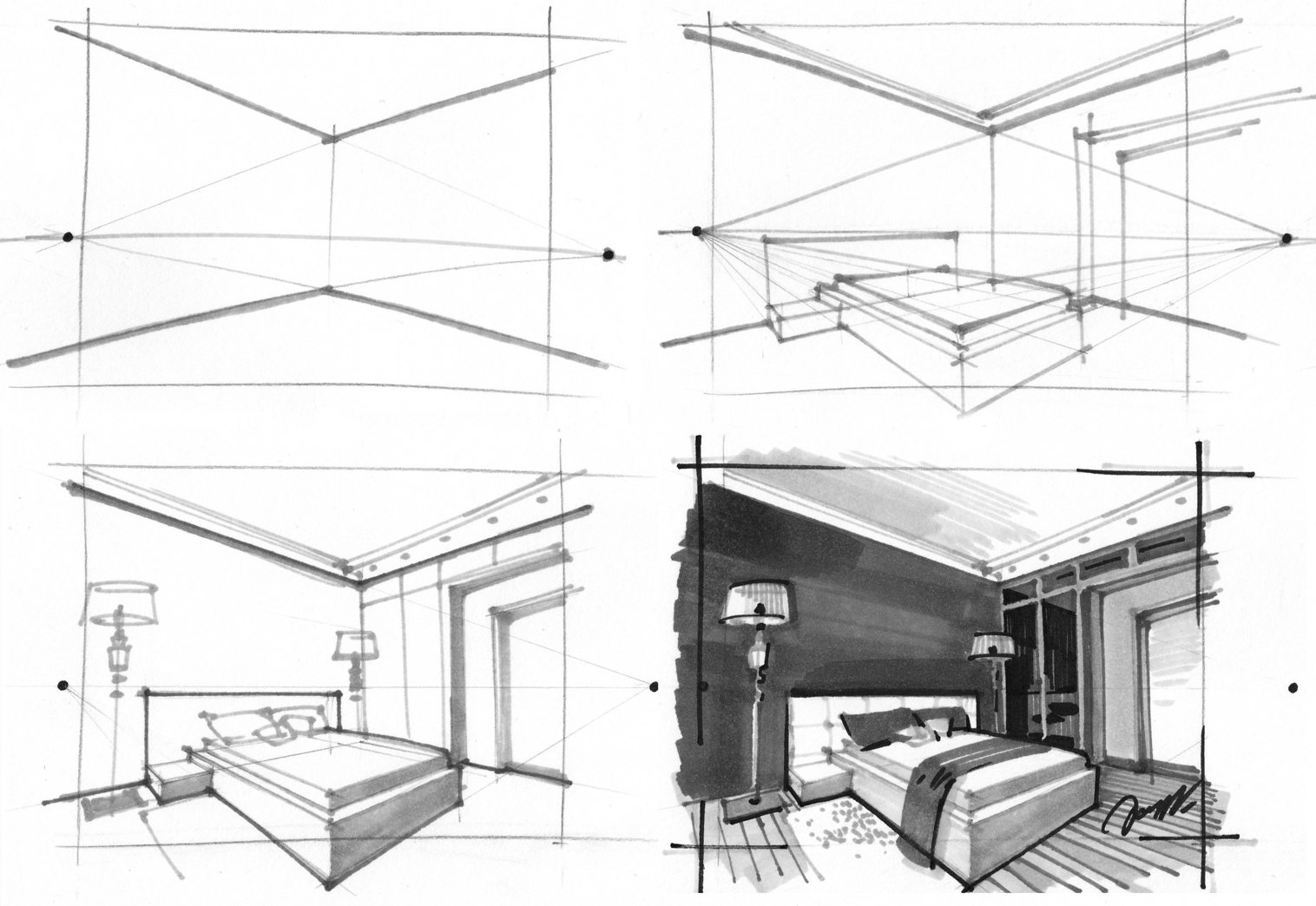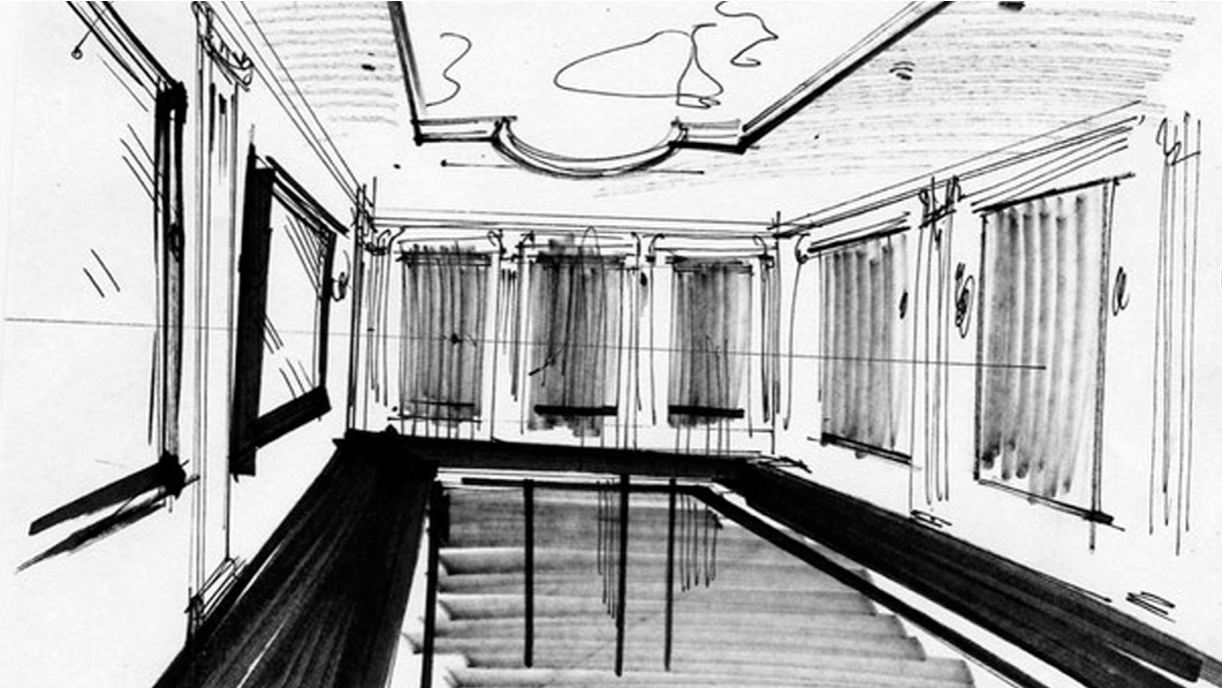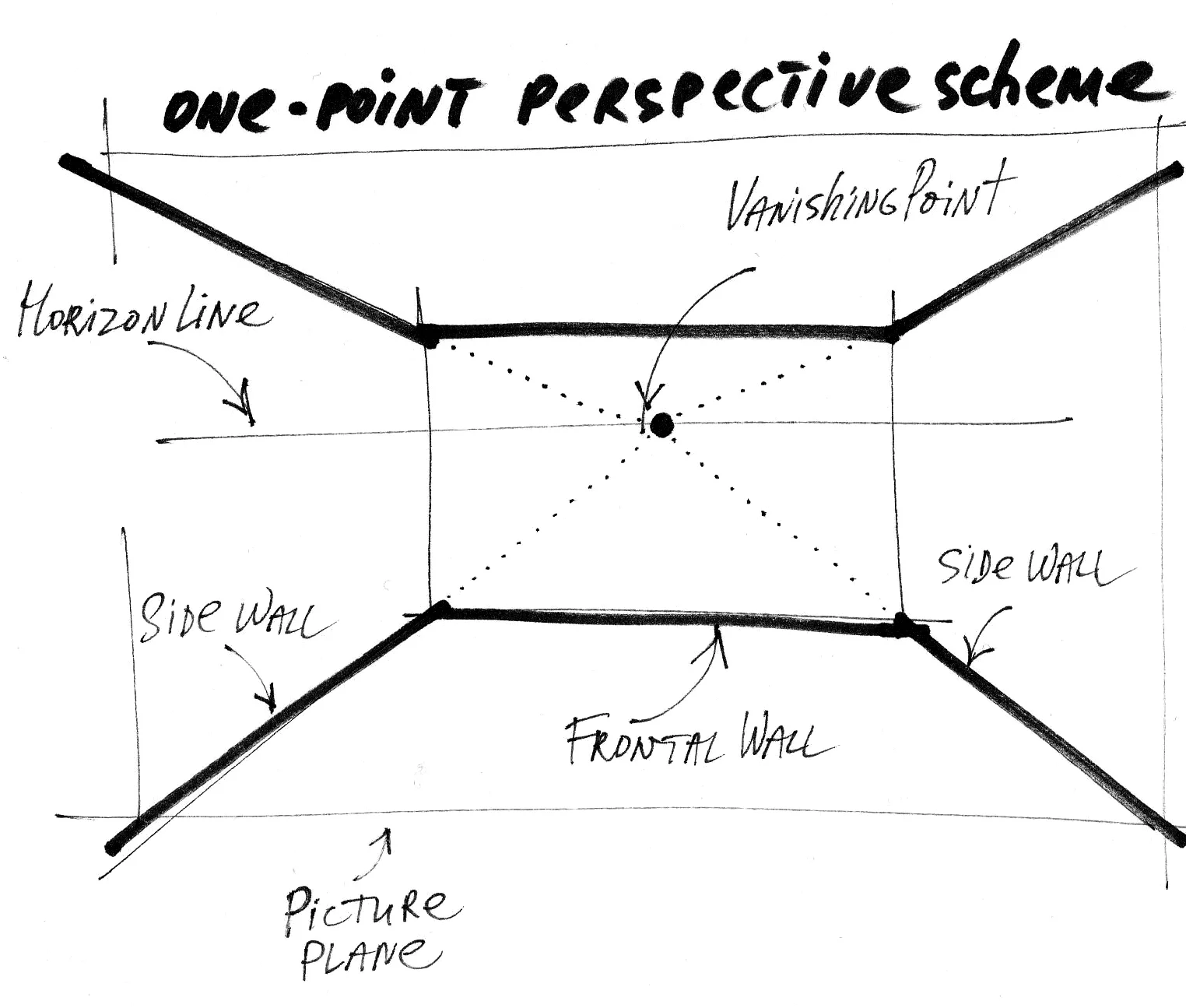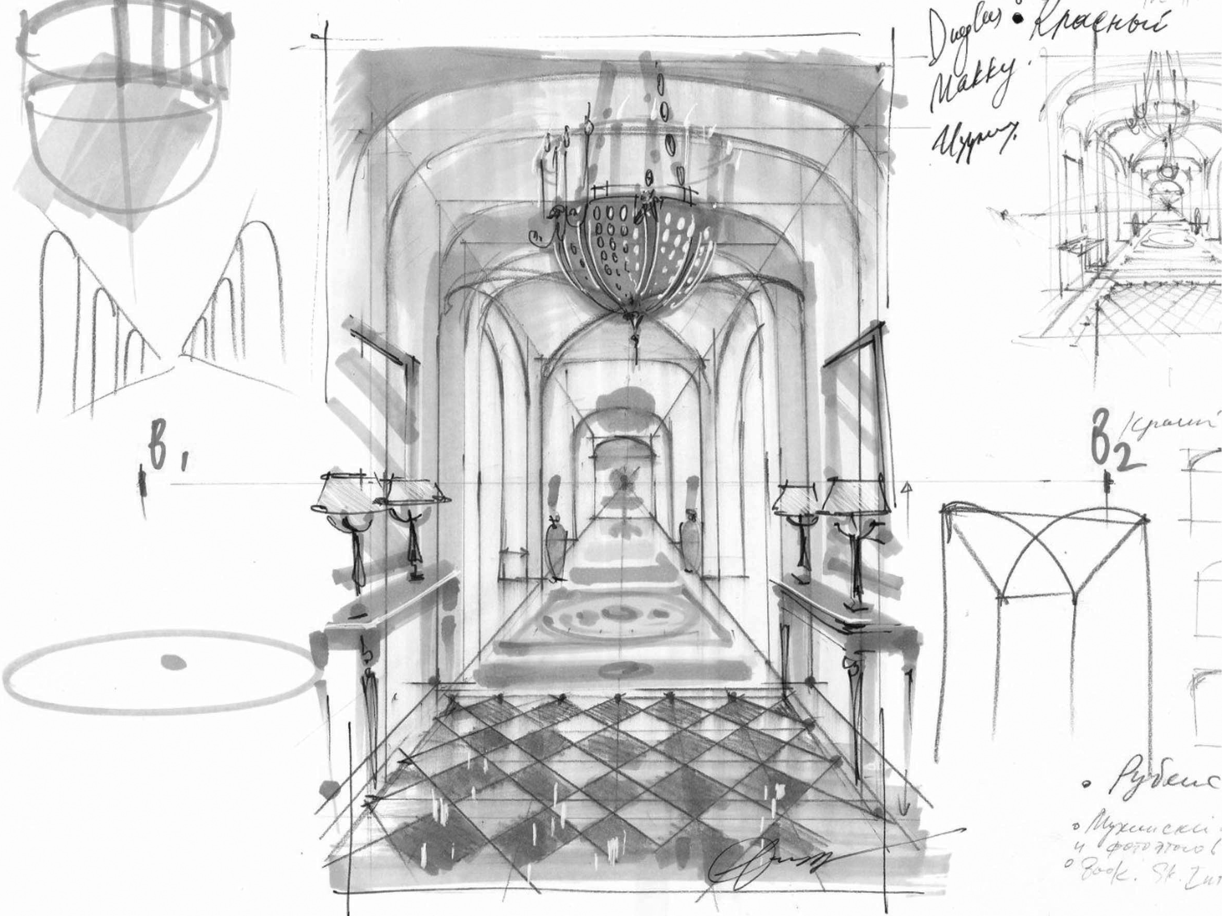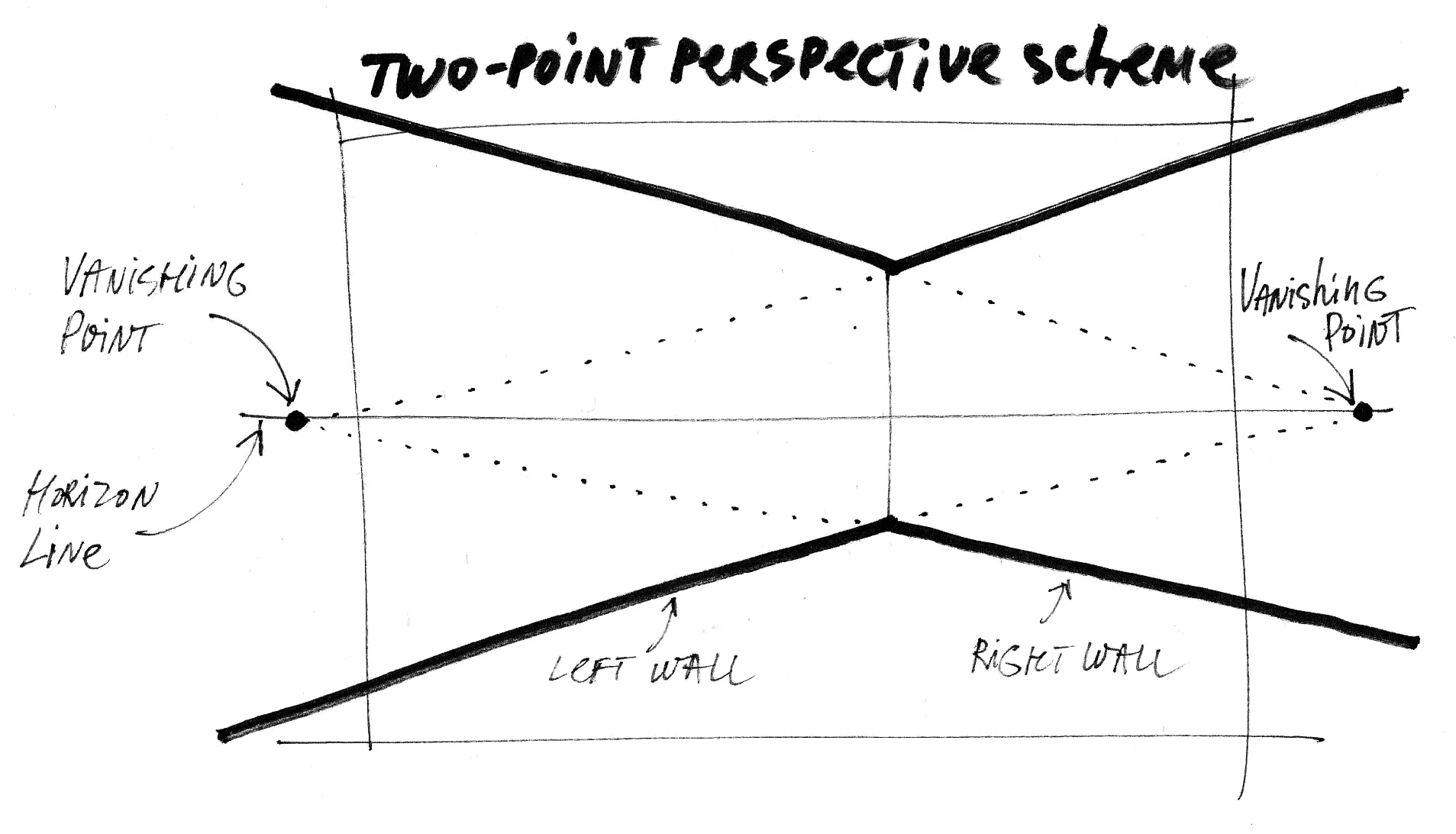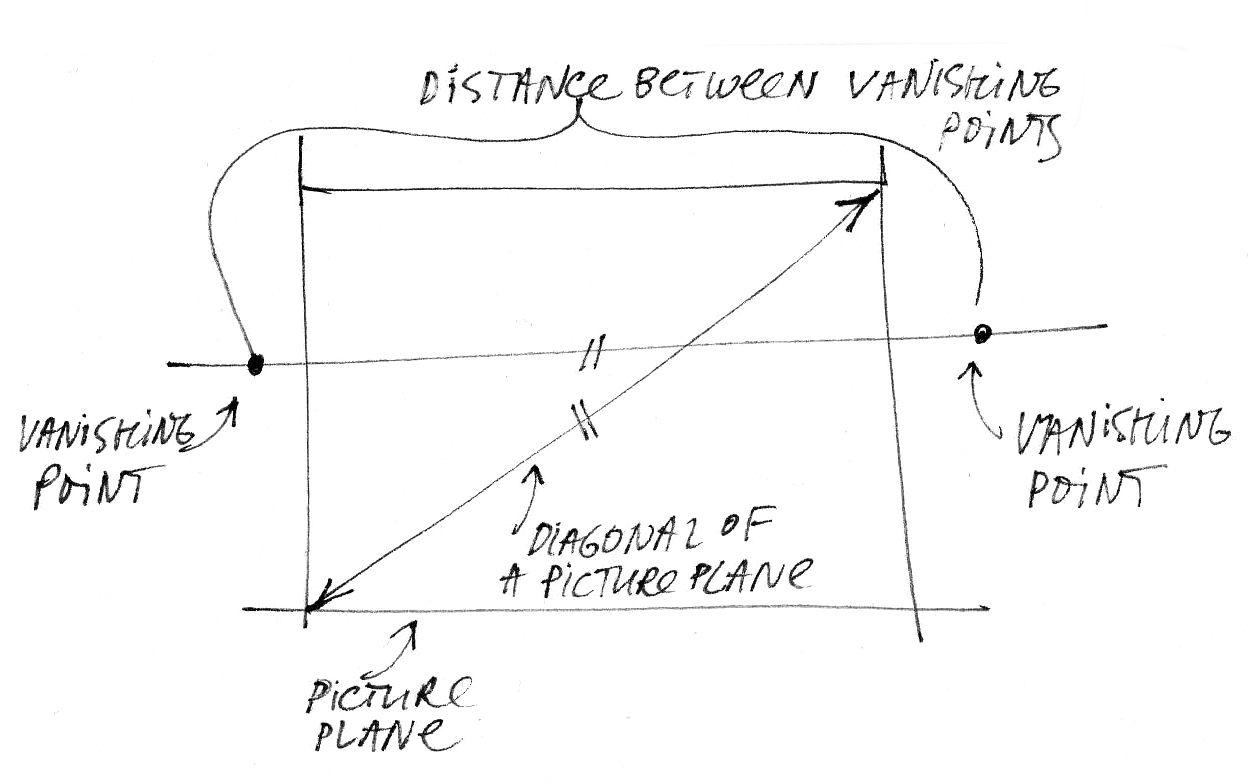Welcome back to the blog!
Over the past few weeks, we've embarked on an exciting journey through the world of interior sketching. Our three-part series covered essential techniques to help you create stunning interior sketches with confidence and ease.
In case you missed any of the sessions, here's a comprehensive recap of what we learned.
Day 1: Understanding 1-Point Perspective
On the first day, we dove into the basics of 1-point perspective with a practical sketching demo focused on a bathroom.
Key Takeaways:
- Vanishing Point: The concept of the vanishing point and how all lines converge towards it.
- Horizon Line: Placing the horizon line correctly to establish the viewer's eye level.
- Drawing a Bathroom: Applying 1-point perspective to sketch a bathroom, emphasizing depth and proportion.
Day 2: Mastering 2-Point Perspective
Building on our foundation, day two was dedicated to 2-point perspective with a focus on sketching a dining room.
Key Takeaways:
- Two Vanishing Points: Understanding how to use two vanishing points on the horizon line to draw objects at an angle.
- Drawing a Dining Room: Moving beyond simple shapes to sketch a dining room, capturing its dynamic angles and interior elements.
- Practical Applications: Using 2-point perspective to sketch furniture, room corners, and various interior elements from different viewpoints
Day 3: Exploring 3-Point Perspective
Our final session introduced the advanced technique of 3-point perspective with a focus on a wardrobe interior.
Key Takeaways:
- Three Vanishing Points: Adding a third vanishing point, below the horizon line, to create a sense of height and depth.
- Drawing a Wardrobe Interior: Understanding how the addition of the third point distorts the objects, making them appear more three-dimensional.
- Applications: Practical demo of using 3-point perspective to sketch tiny interiors like wardrobes, home offices, etc.
Mastering 3 points allows you to bring a new level of dynamism and drama to your sketches, making them truly stand out.
Additional Resources
Materials Used: Sketchbook, Markers and Fineliners
For all days of the series, I used markers and fineliners to create the sketches. These tools are essential for achieving clean lines and vibrant colours in your interior drawings. Here are the Amazon links to the materials I used:
- Markers: I use Sketch&Art Terracotta in the videos, but here is an Amazon set of 60 Colours https://amzn.to/4bu1aLZ
- Sketchbook: I used similar to this one, Hahnemuehle size A5 https://amzn.to/4bt1Elq
- Fineliners: I used Milan Sway fineliner on Day 1 https://amzn.to/3zrs9KZ , for Days 2 and 3 I used a waterproof fineliners from UniPin https://amzn.to/4f9YBBT
Instagram Live Stream: Perspective Drawing
Between Day 2 and Day 3, we had an insightful Instagram live stream where we delved deeper into perspective drawing. We discussed tips and tricks, I answered your questions, and provided additional information on my online course BASE. Watch the replay.
Live Q&A Session: Final Thoughts and BASE Course Introduction
To wrap up the series, we held a live Q&A session on Instagram where I answered your questions and provided further insights into interior sketching. During this session, I also introduced my online course, BASE, which offers comprehensive lessons, community support, and exclusive content designed to take your interior sketching skills to the next level. Watch the Q&A replay here.
Wrapping Up the Three-Part Series
Throughout this series, we've covered the essential perspectives that form the backbone of interior sketching. From the basics of 1-point perspective to the complexity of 3-point perspective, each session built upon the last to enhance your sketching skills.
I hope you found these sessions both informative and inspiring. Sketching interiors is not only a valuable skill for designers but also a rewarding creative outlet. Remember, practice is key! The more you sketch, the more confident and proficient you'll become.
What’s Next?
If you enjoyed this series and want to dive deeper, I invite you to join my online course, BASE. It offers structured lessons, and in-depth exclusive content to help you master interior sketching. Learn more about the course here.
Thank you for following along, and I can’t wait to see the incredible sketches you create! Use the hashtag #SorokinaStudents on Instagram and tag me @schoolofsketching so I can see your drawings.
P.S. Enjoyed the article? Please share it with your creative friend, let’s spread the word about interior sketching together.
© Olga Sorokina, 2024
"BASE": a Course Which Teaches All the Basic Techniques You Need to Implement Sketching in Your Interior Design Practice
(Perfect if you are a novice in drawing interiors, interior designer, id/architecture student)
Interested in the topic of perspective drawing?
You might like to check these articles from my blog:
Read more from my blog:
Blog archive: here
